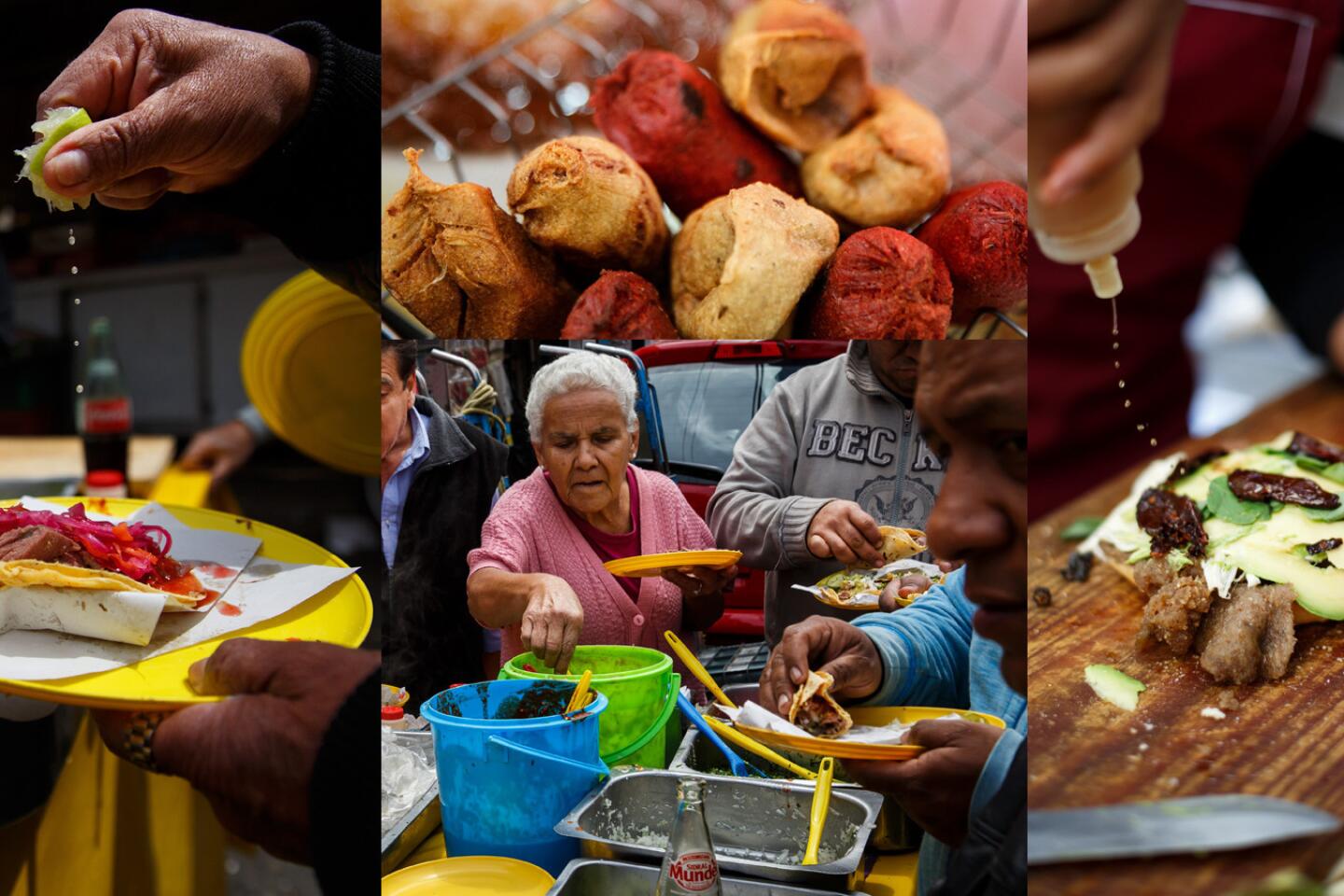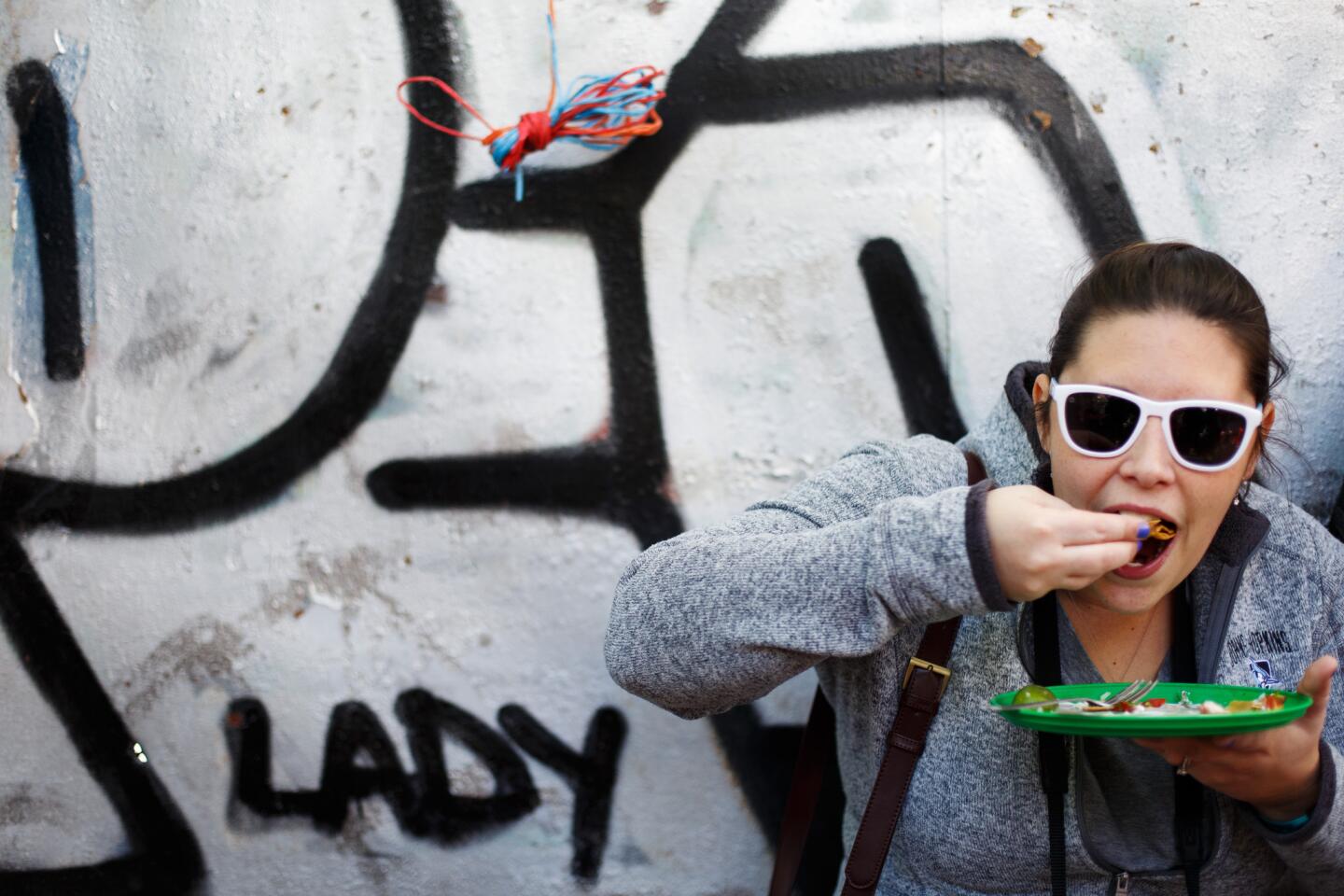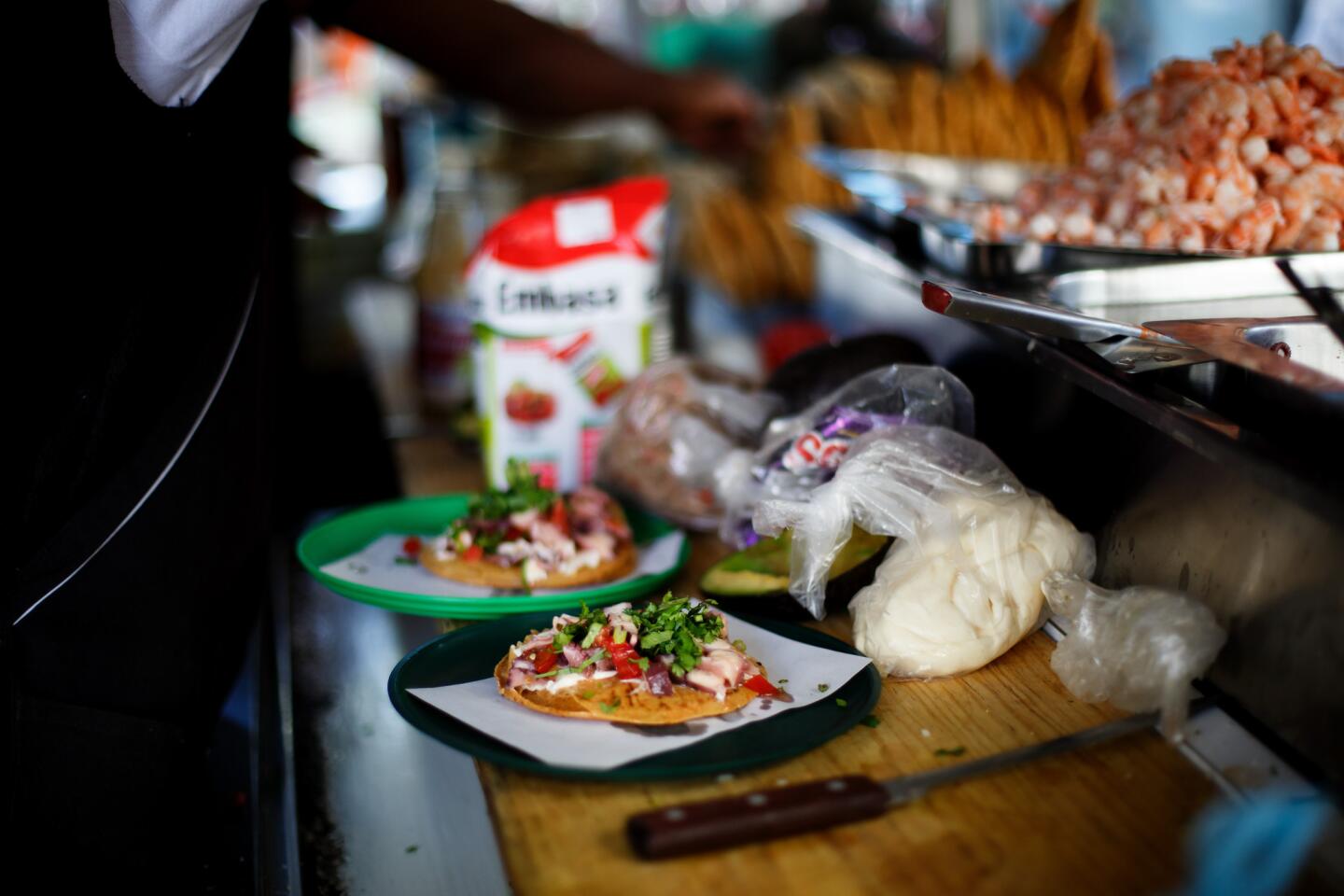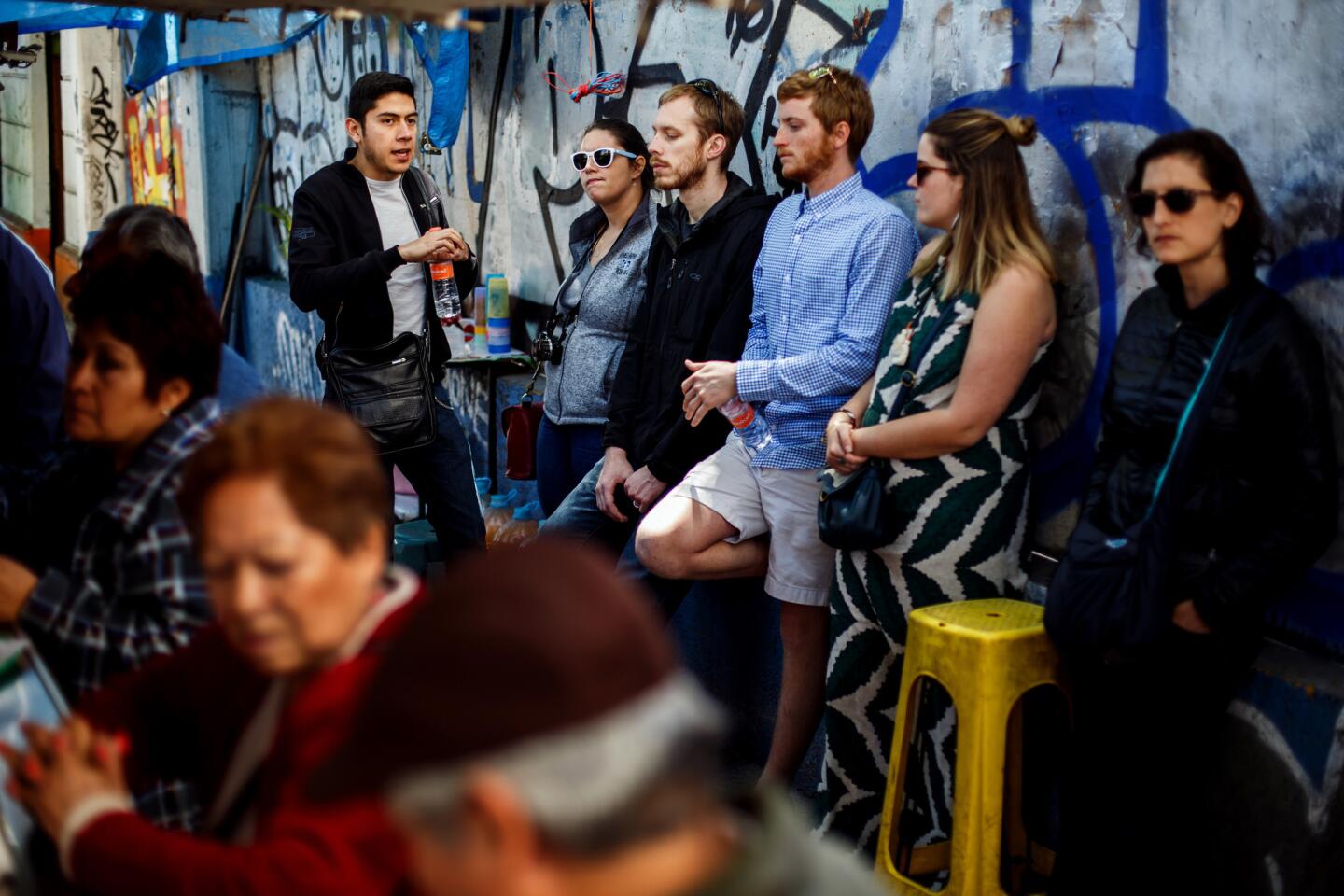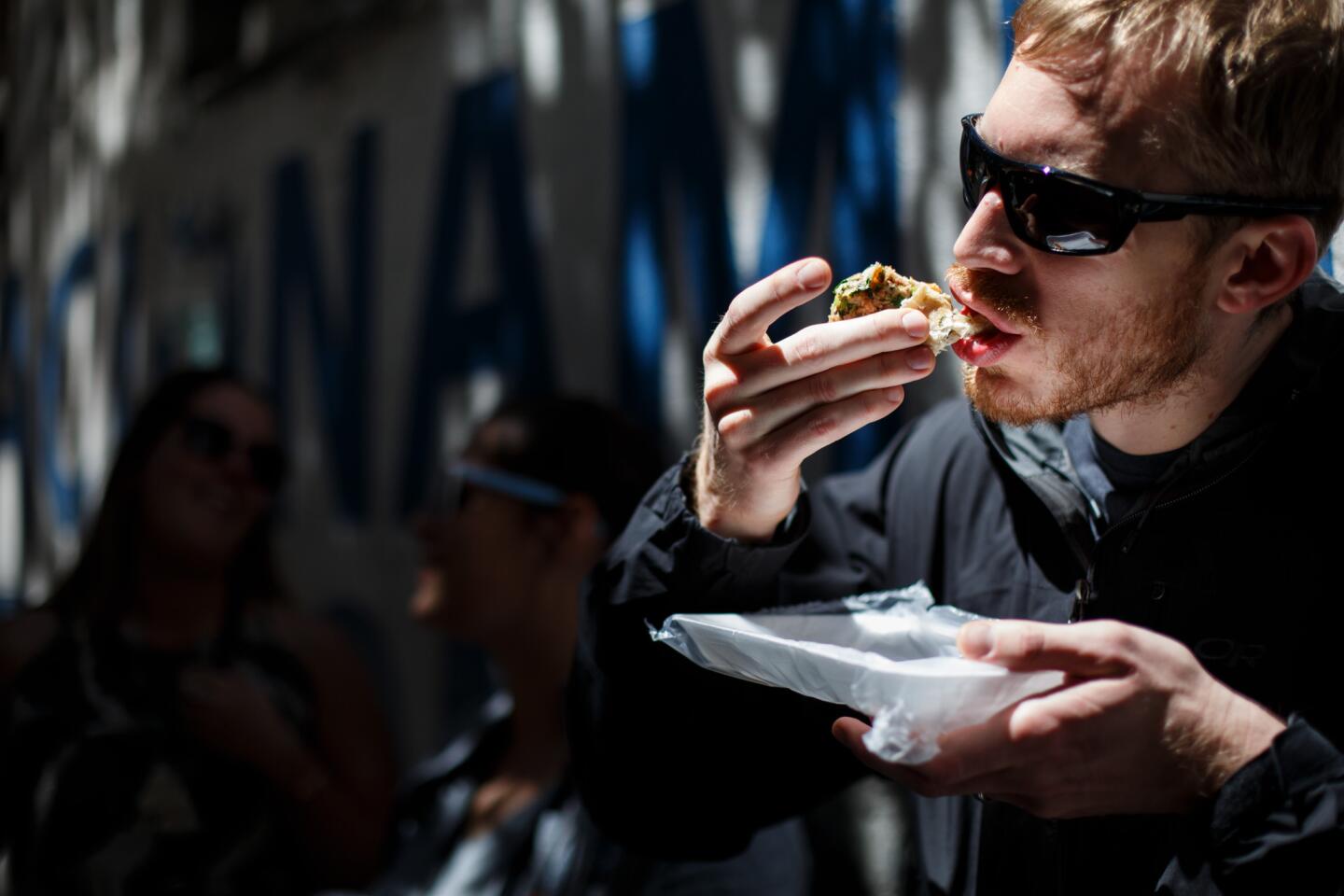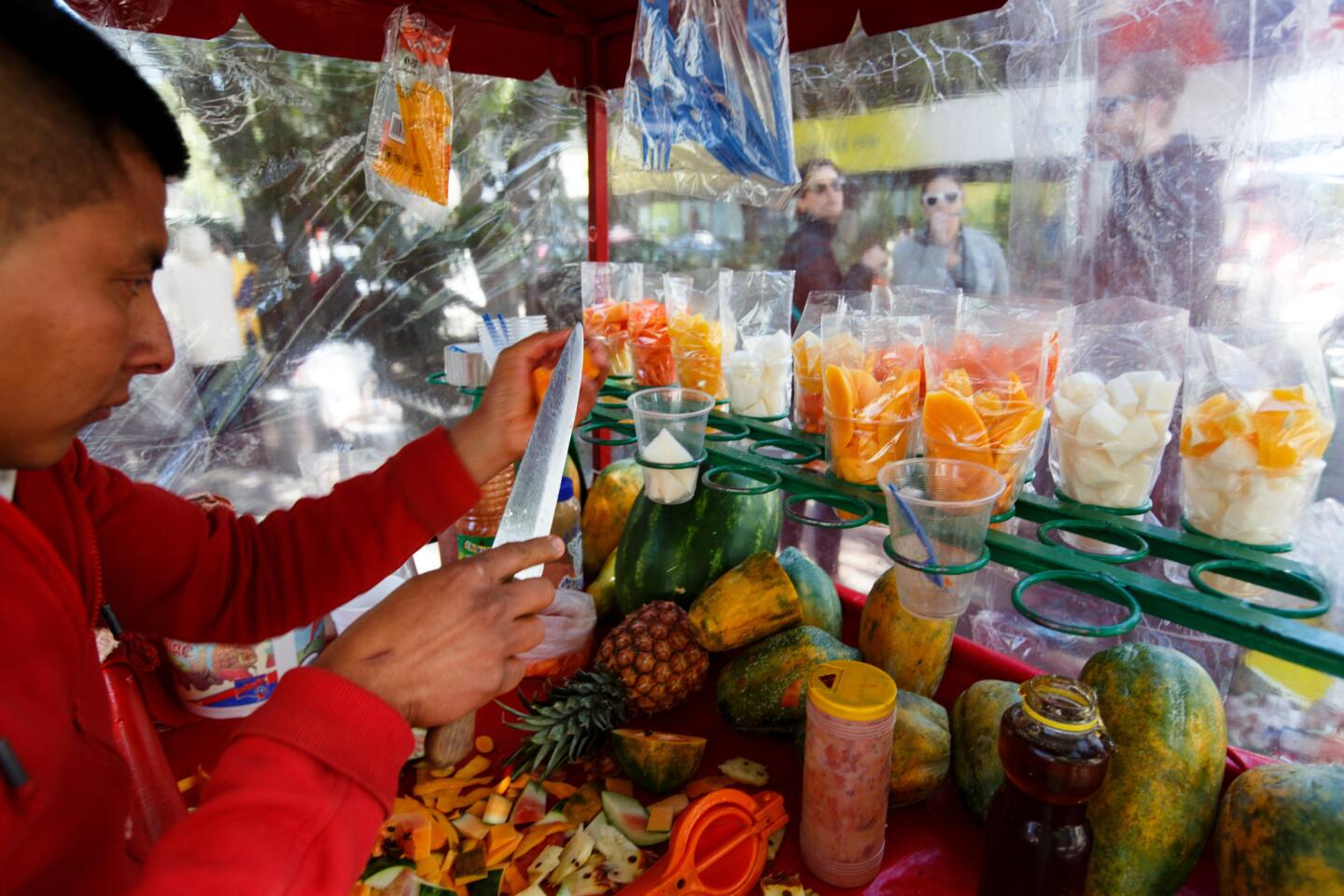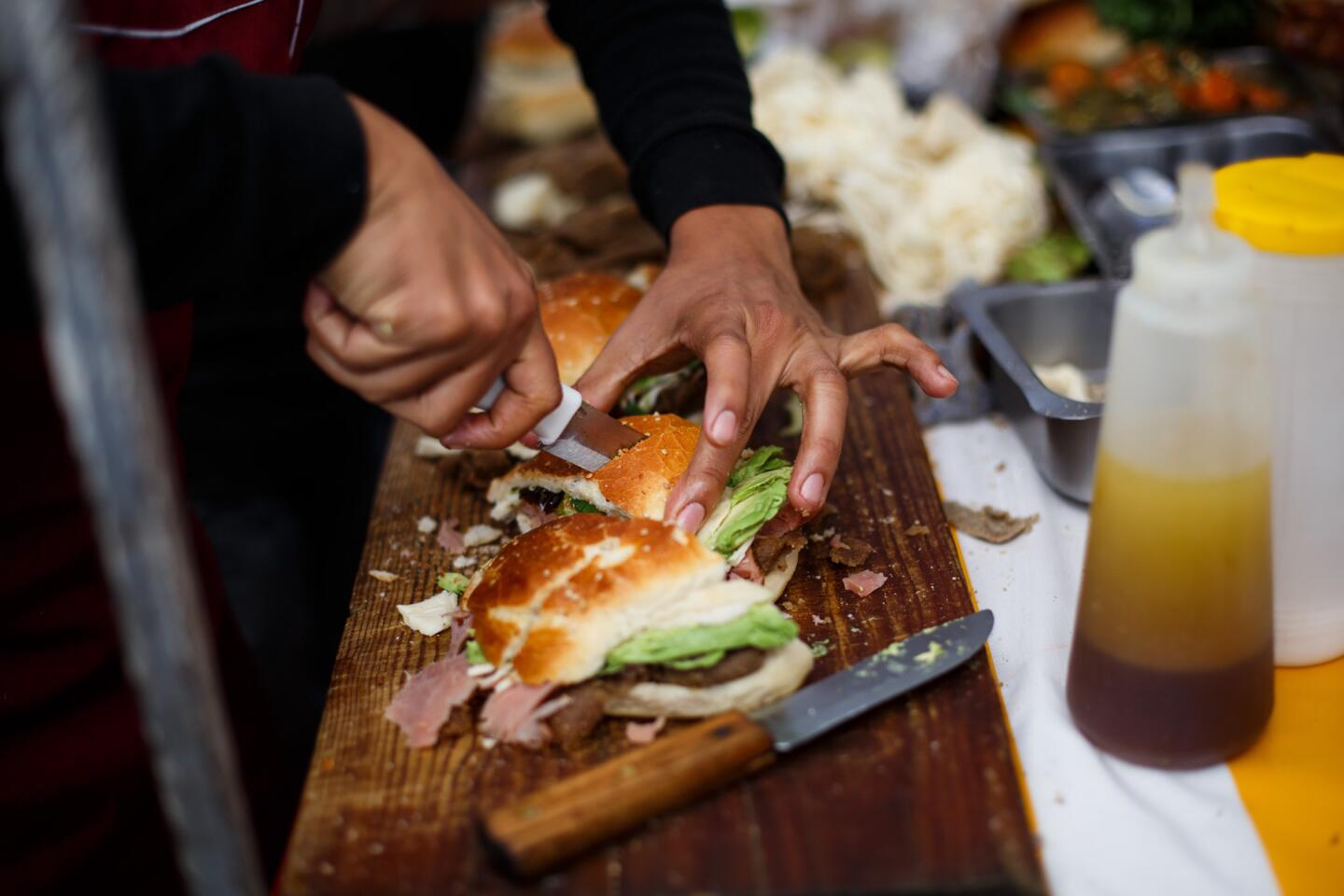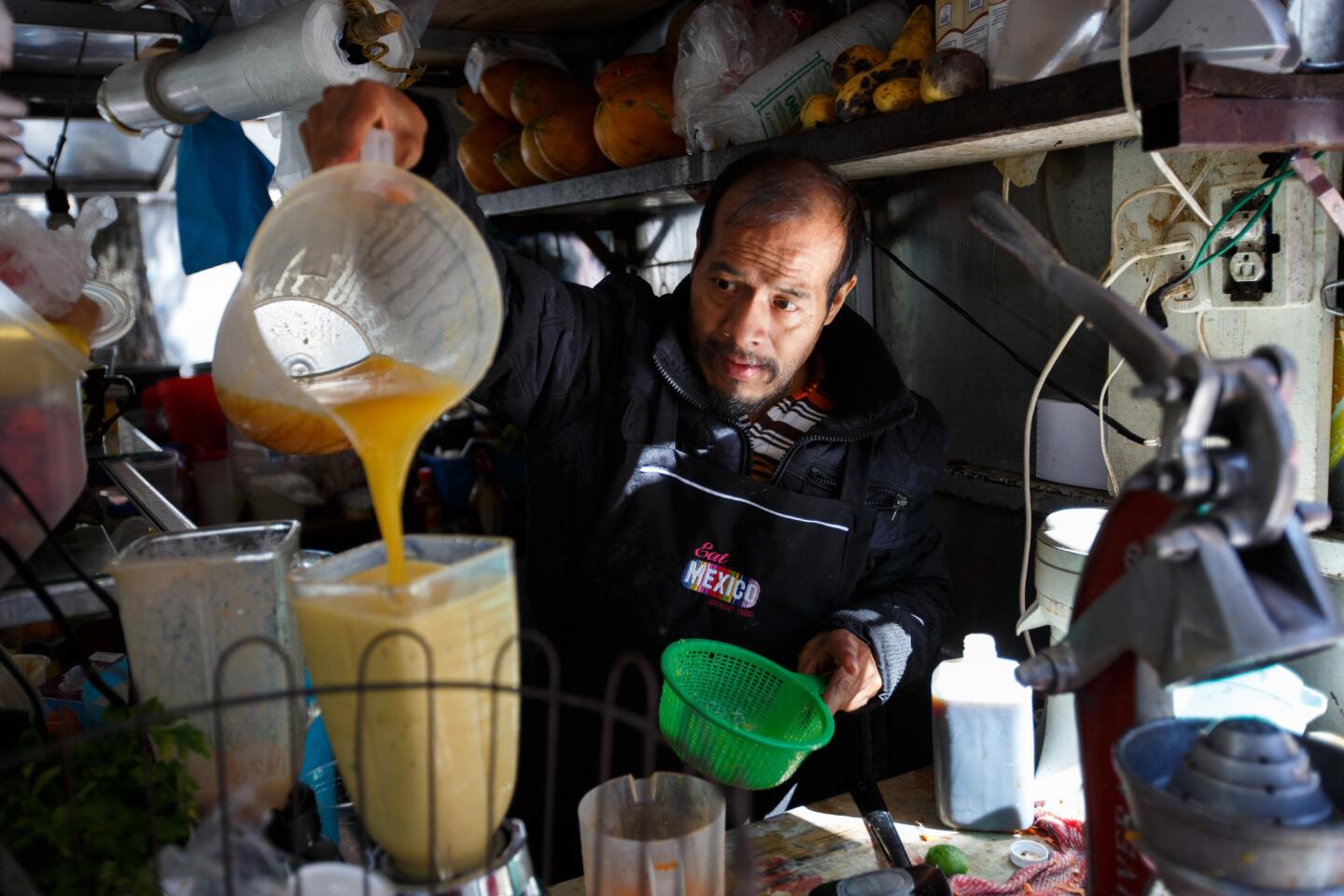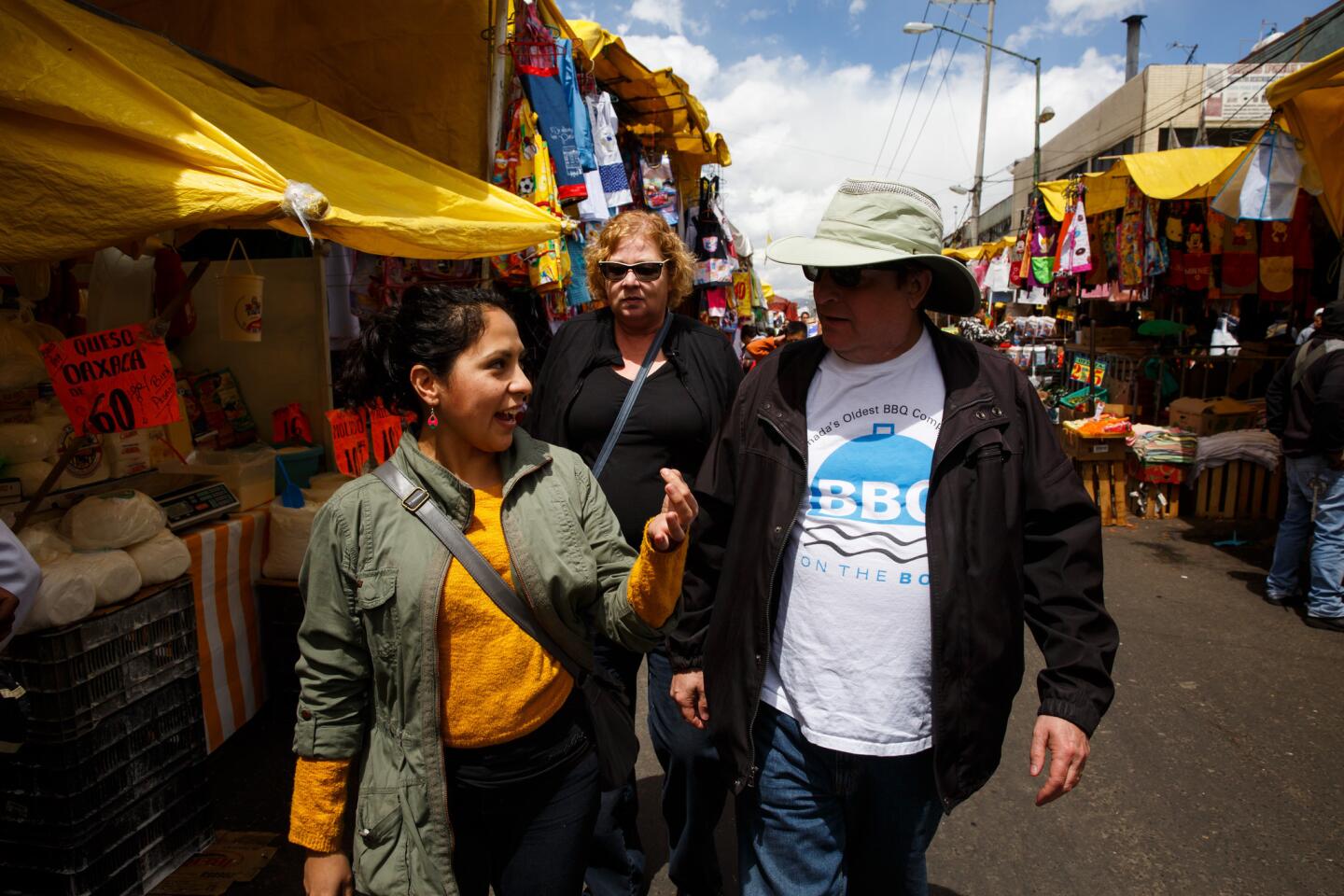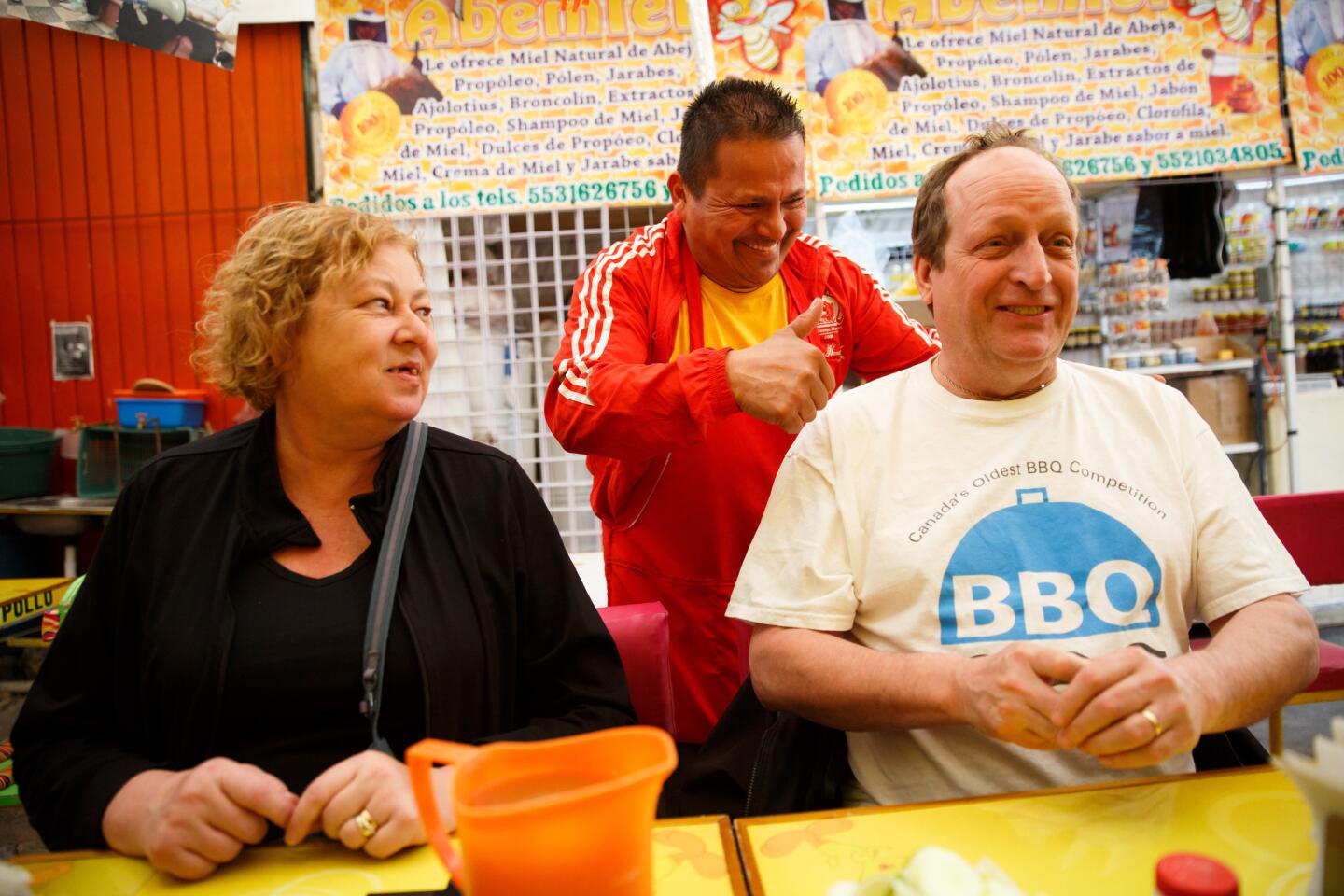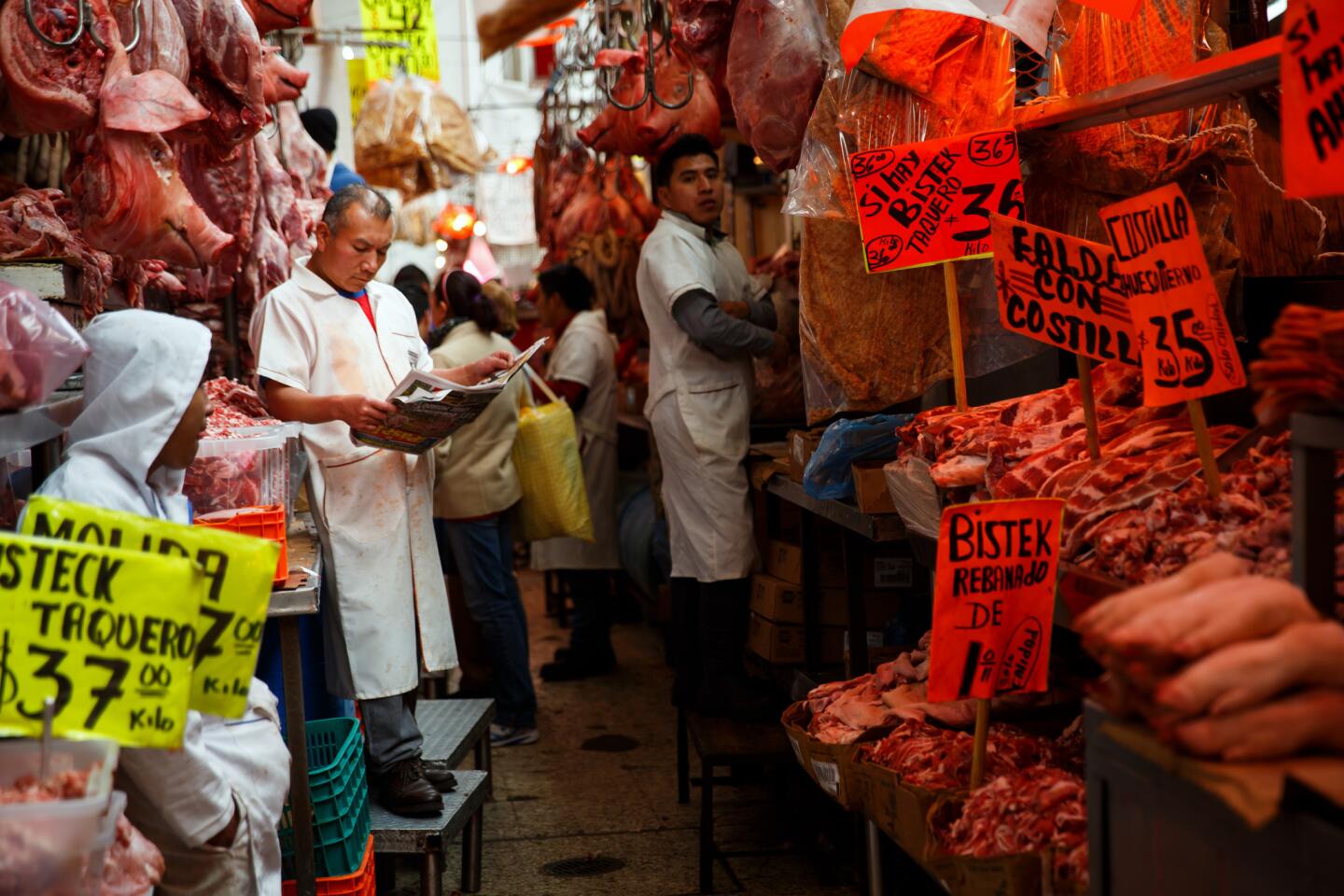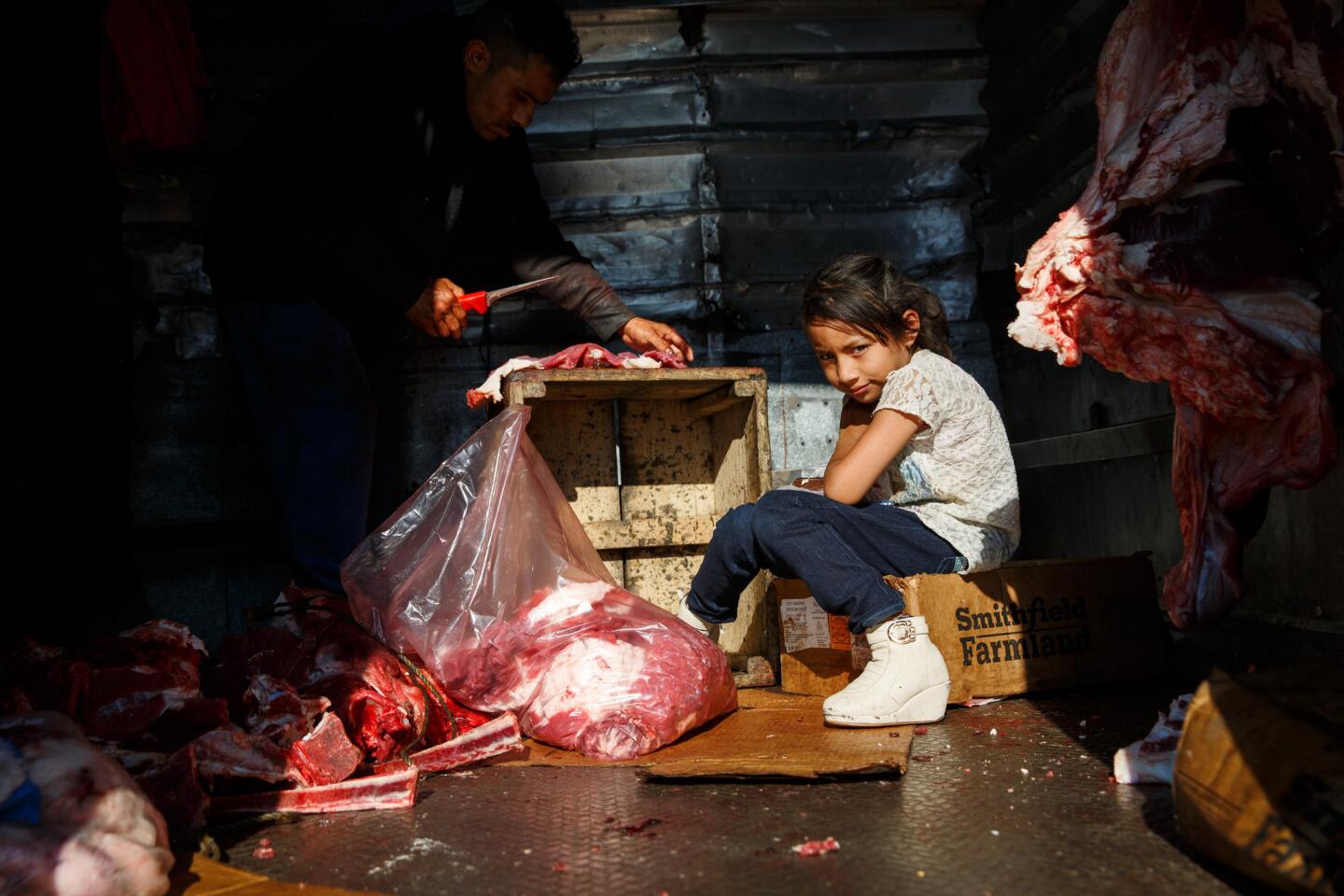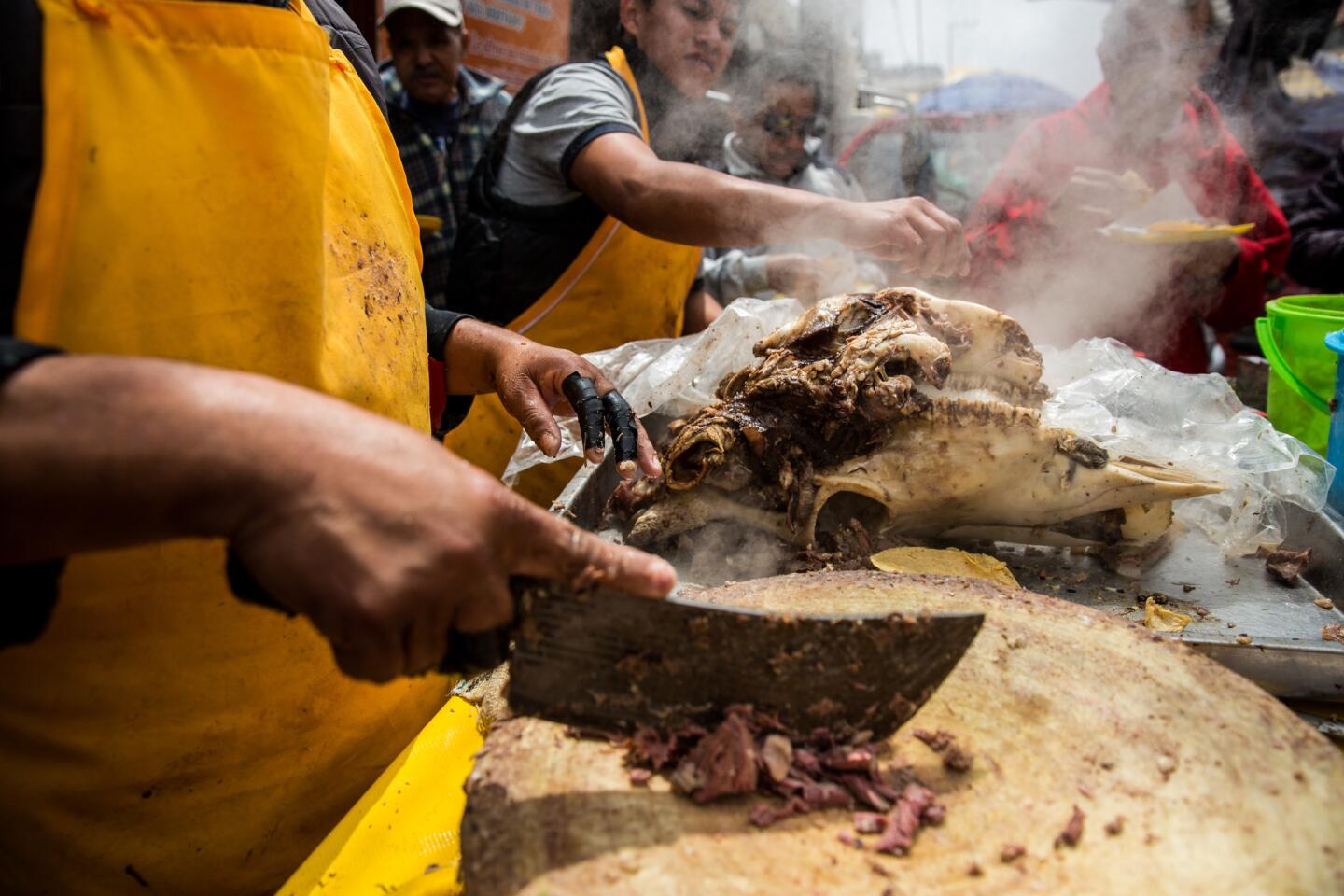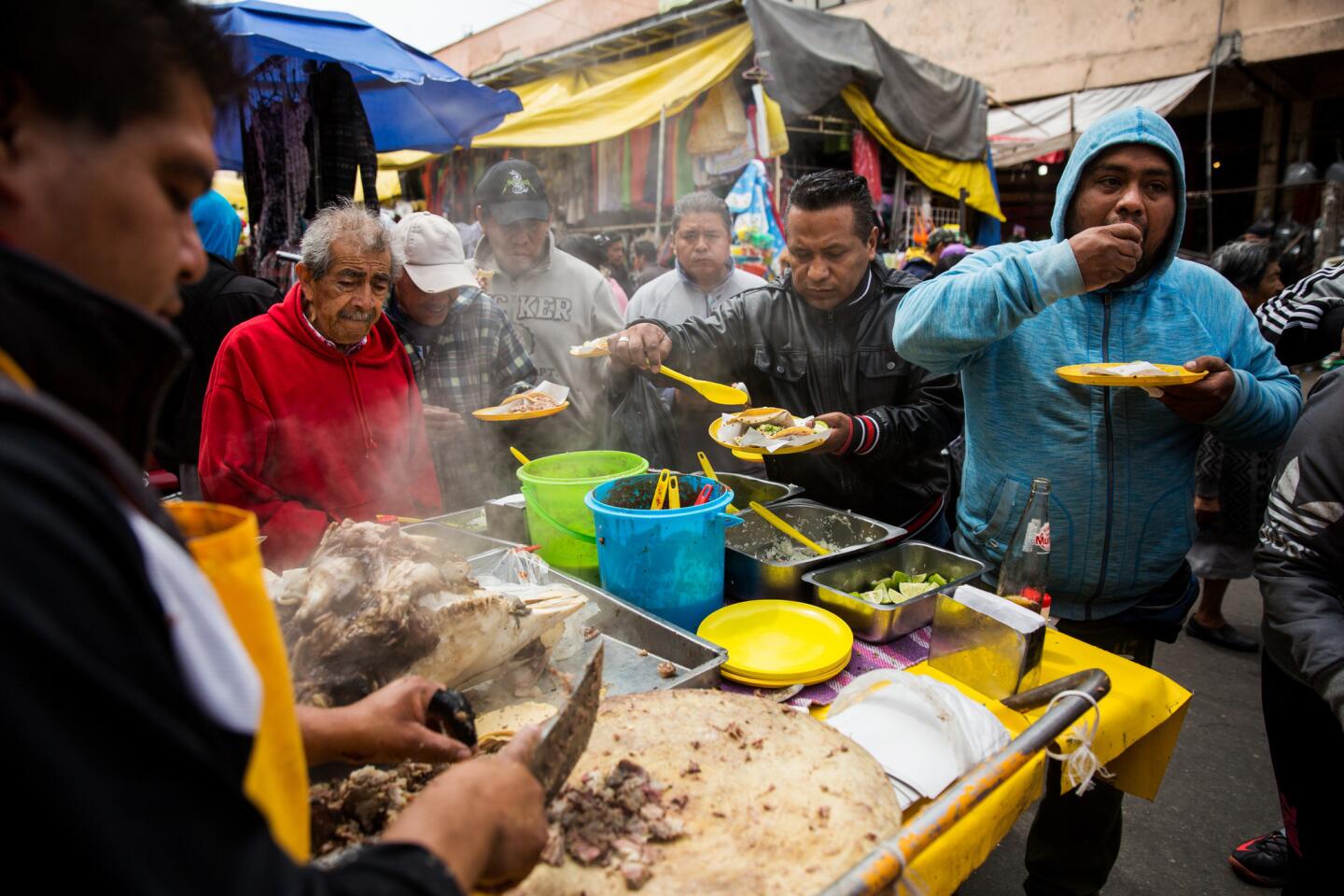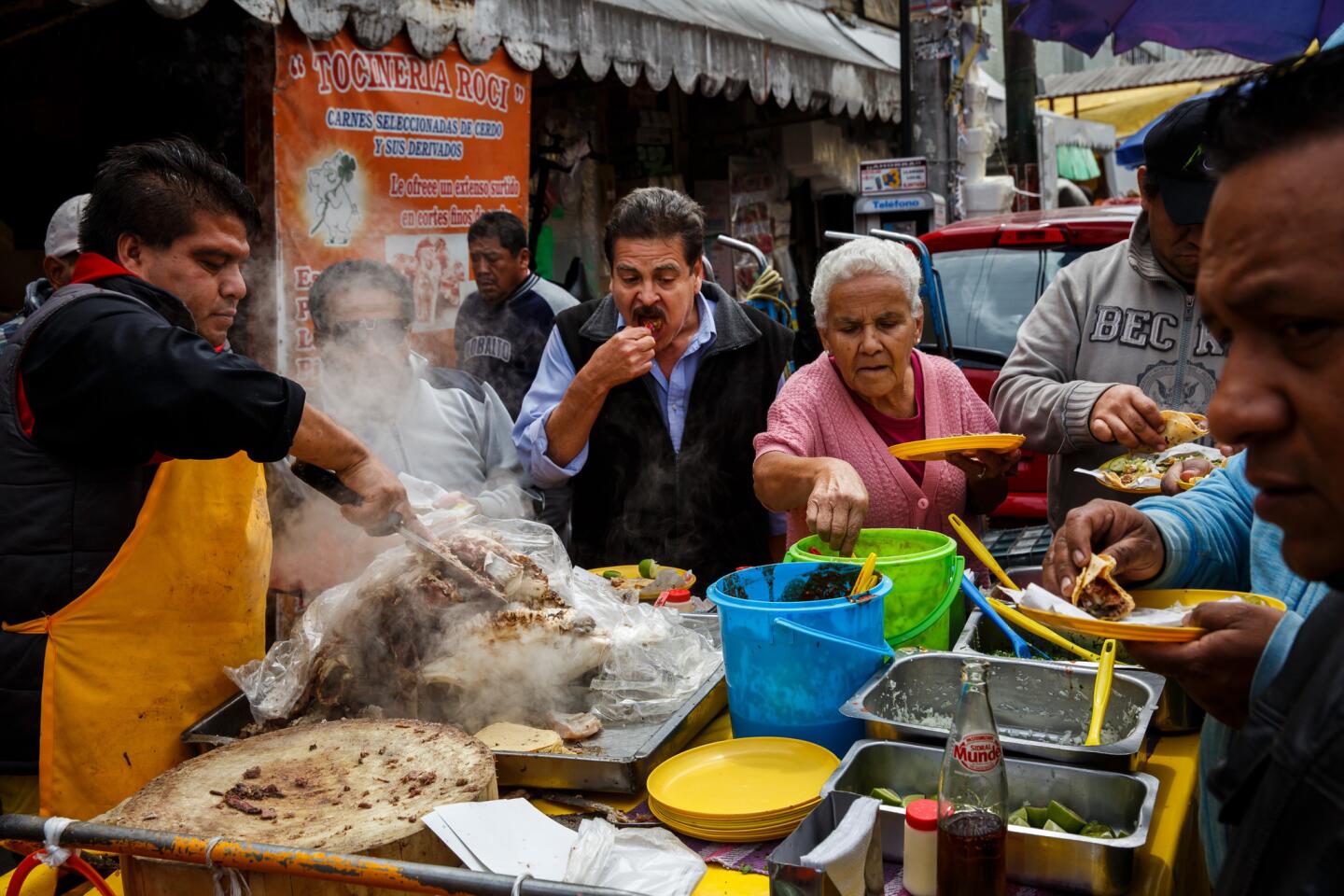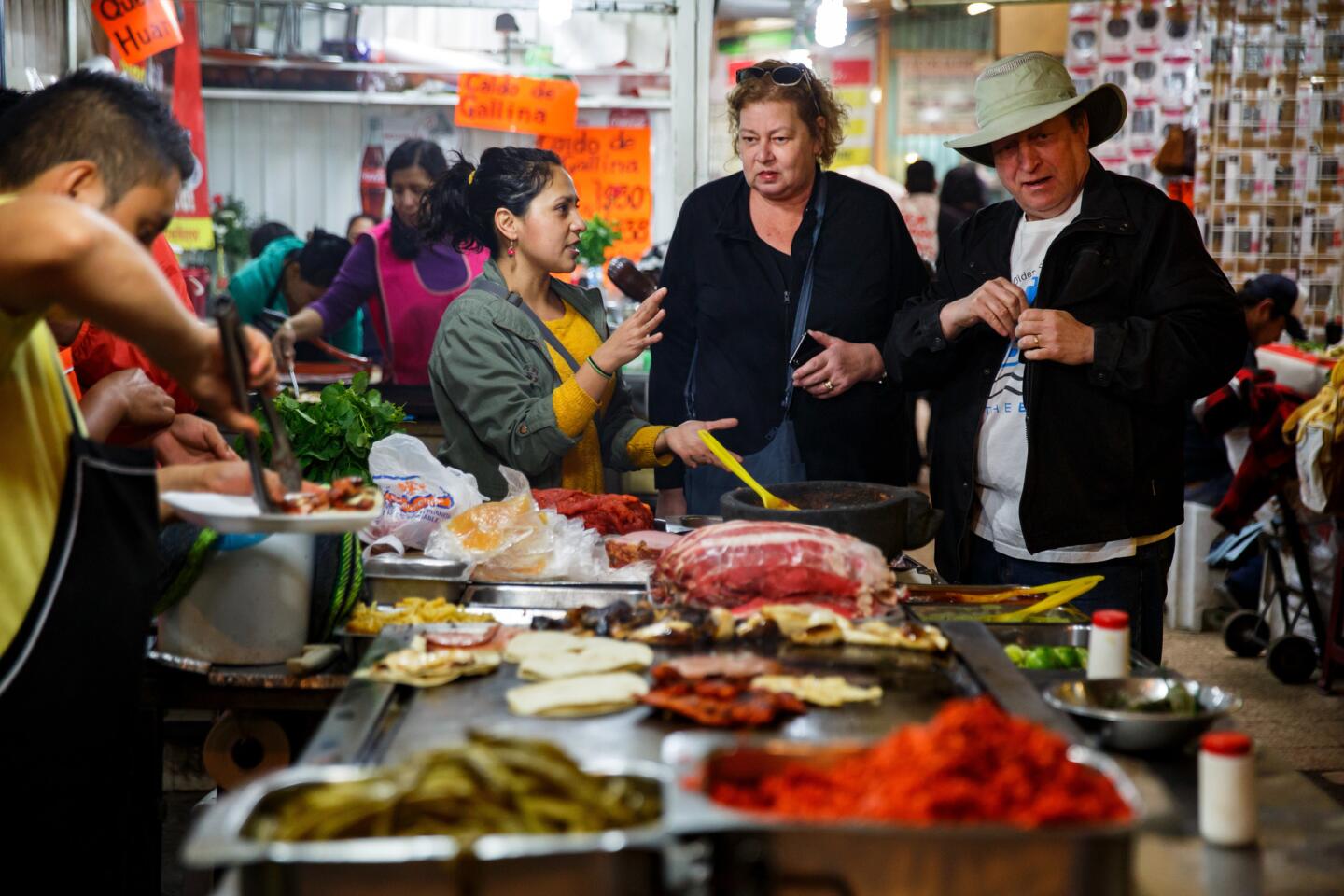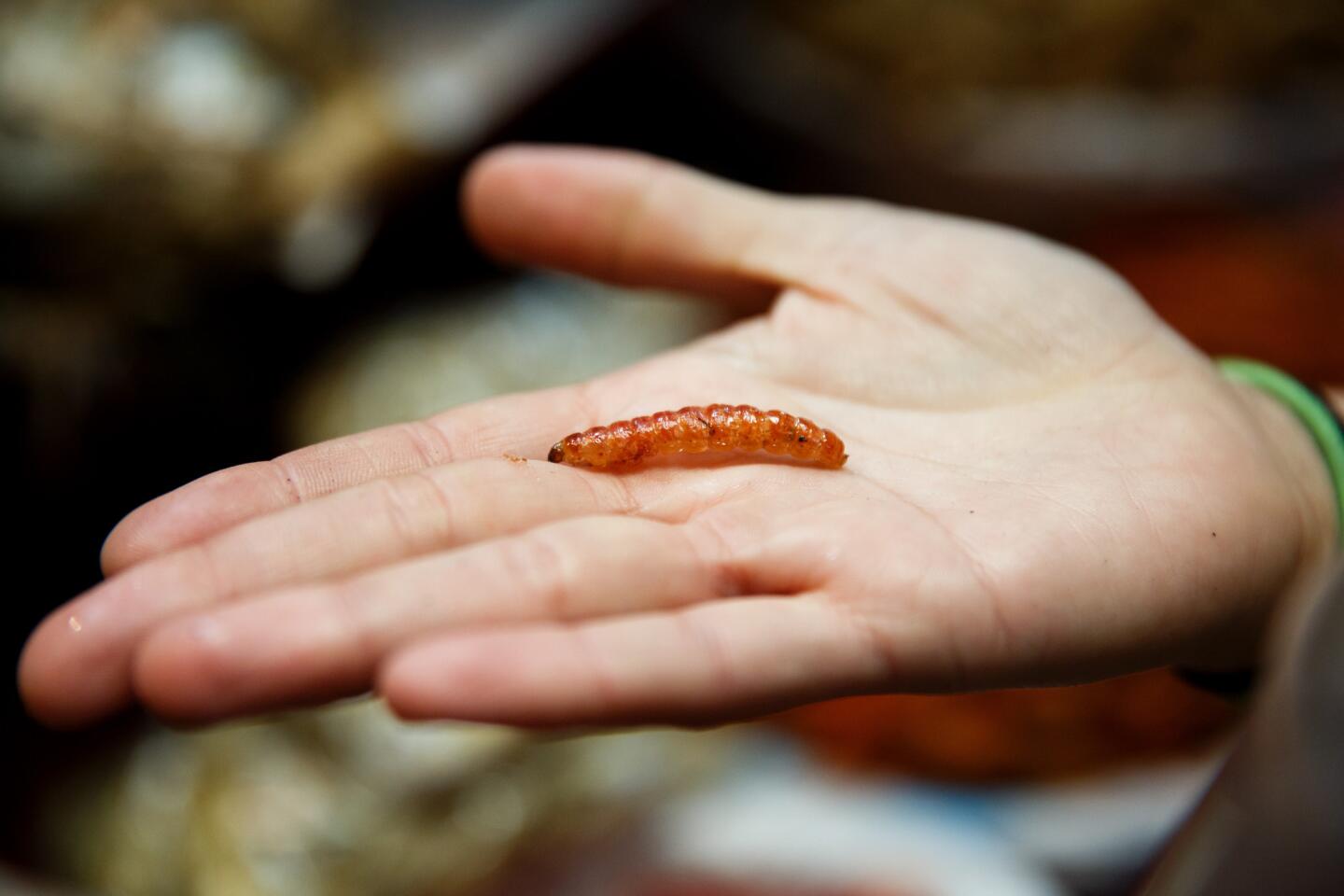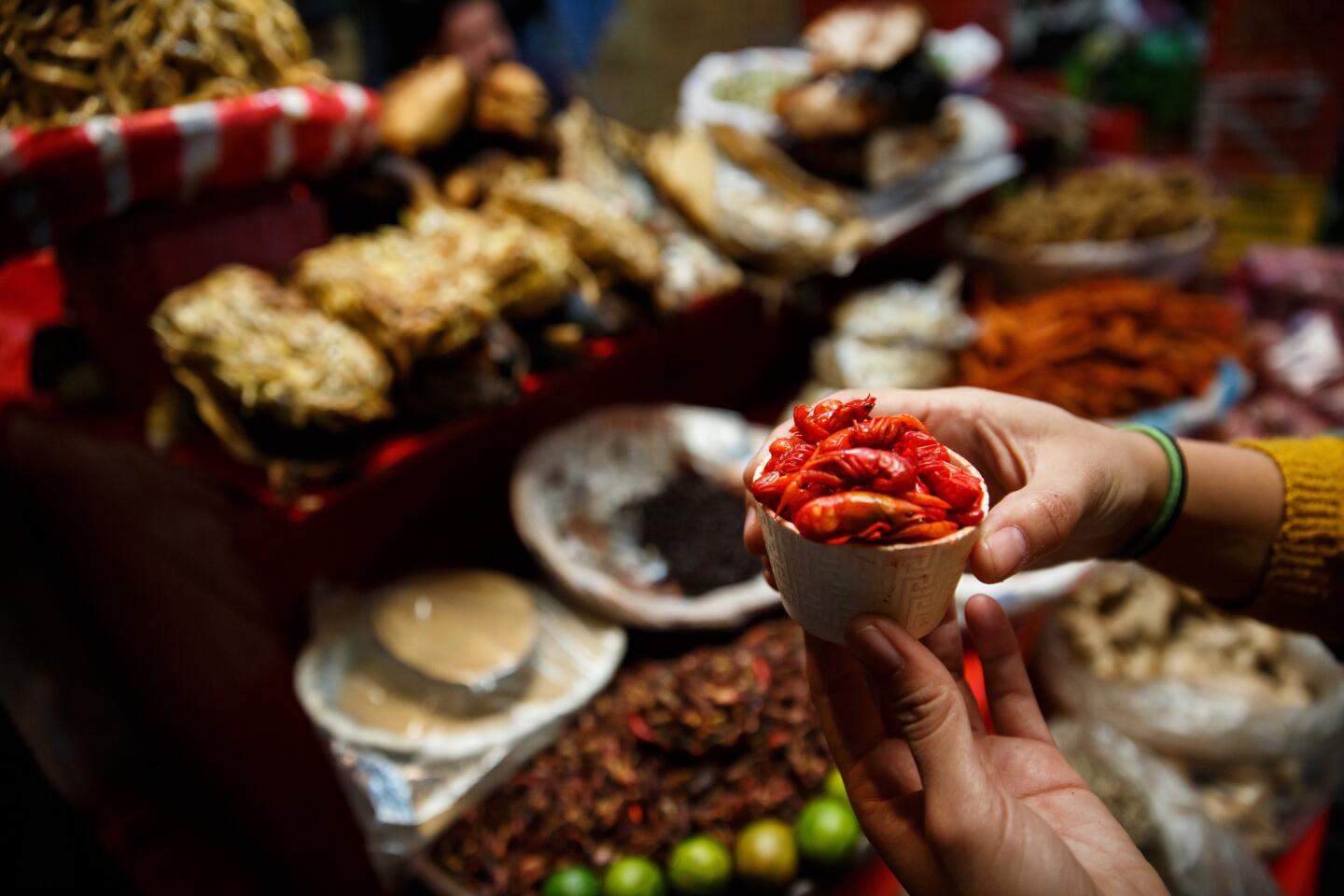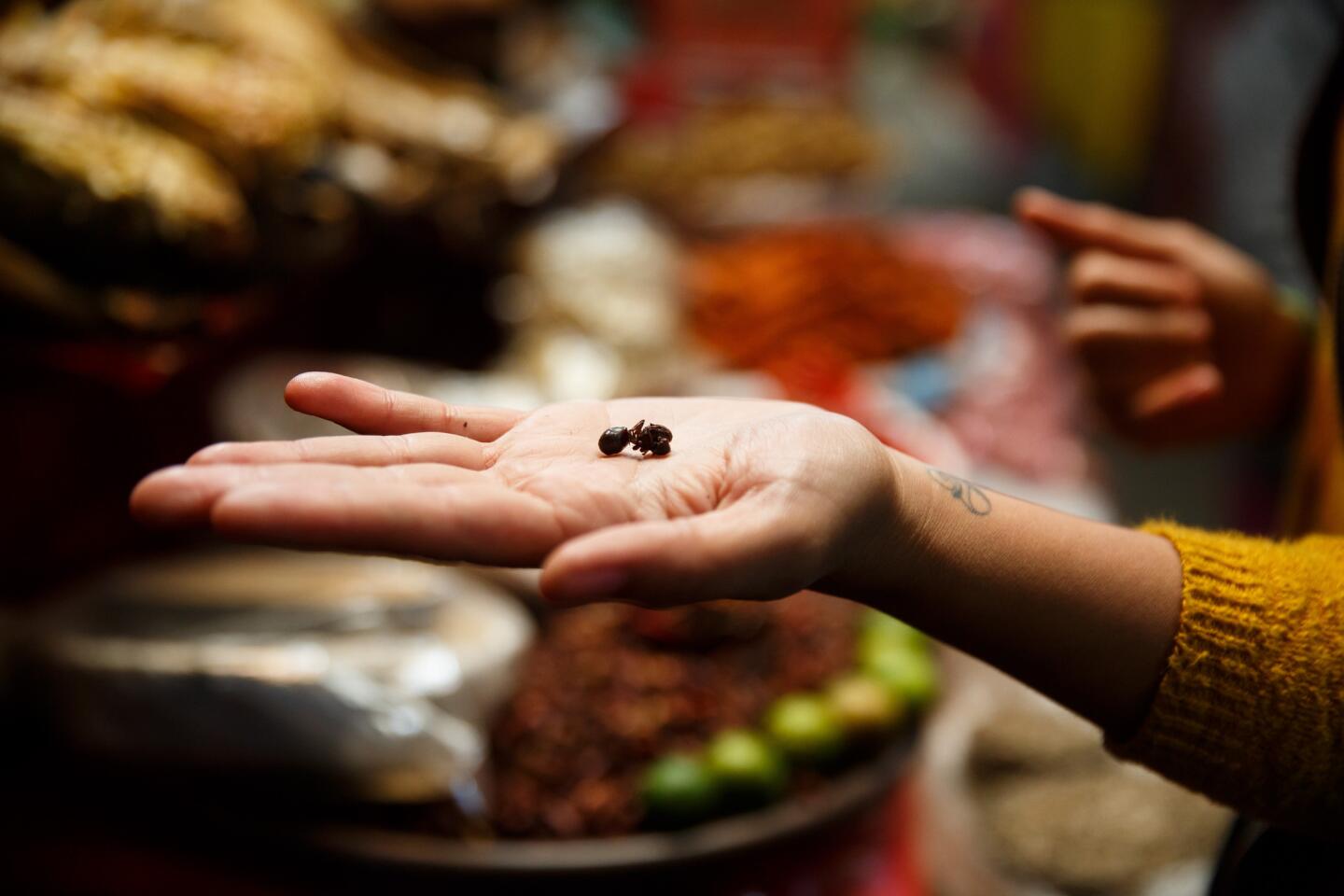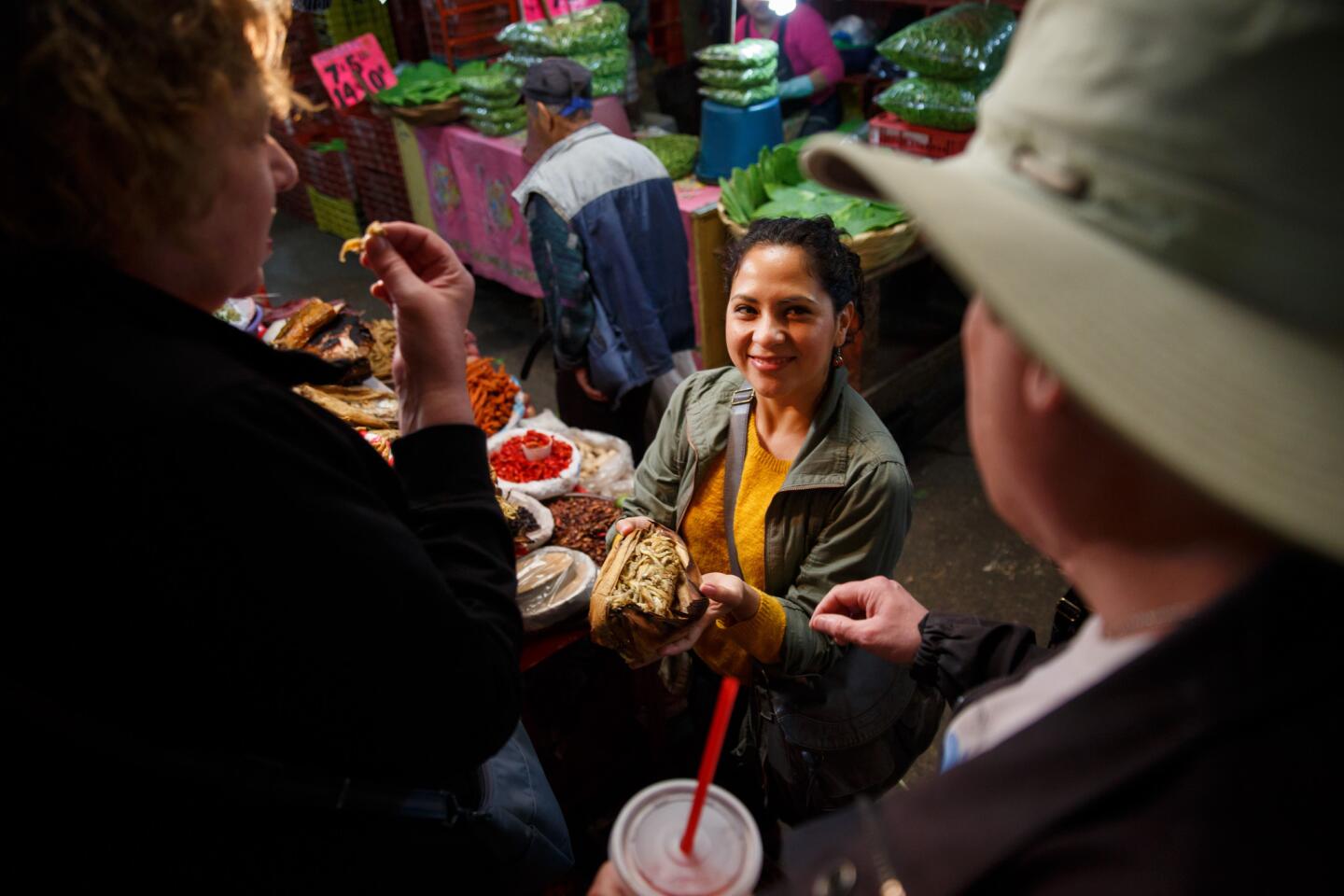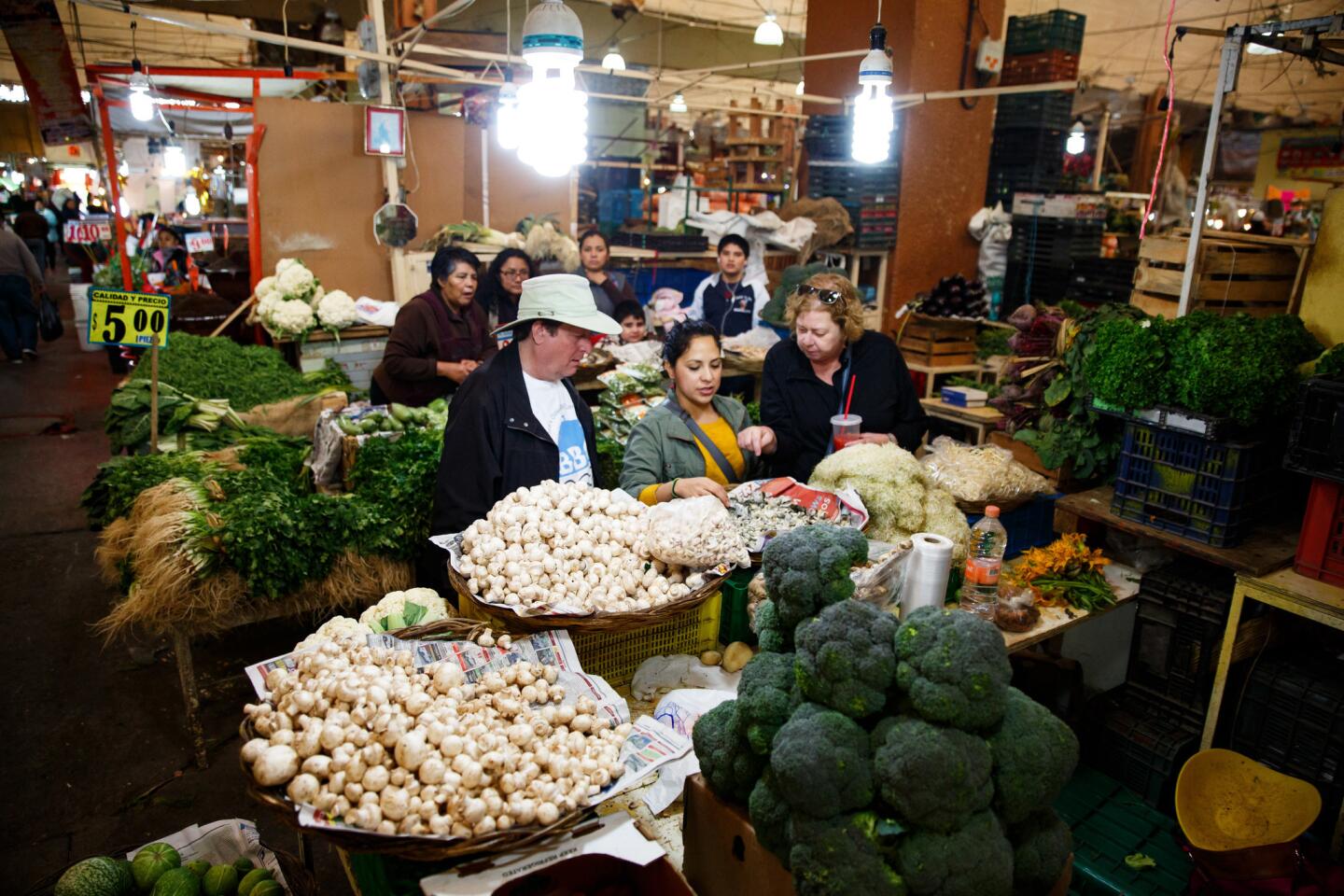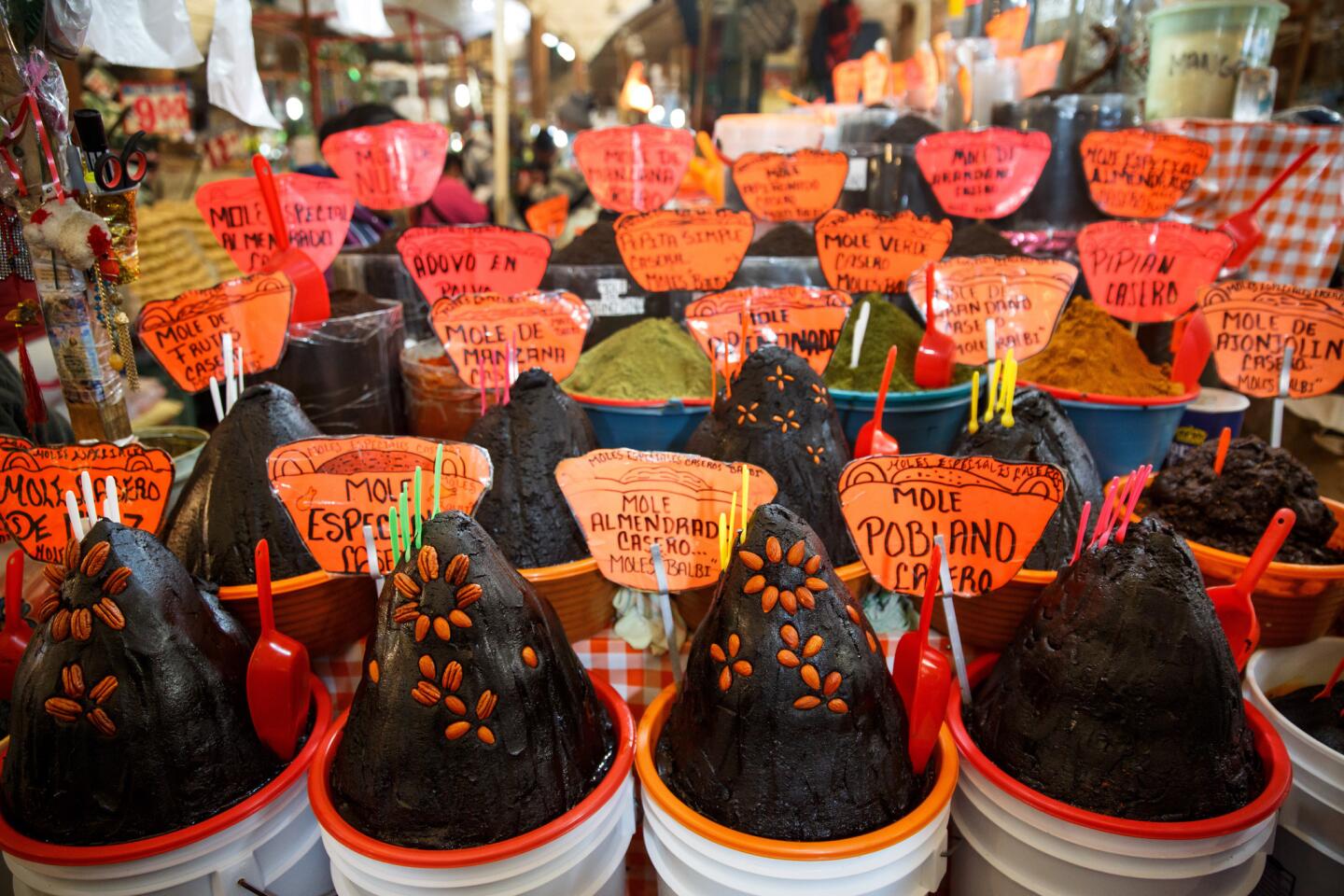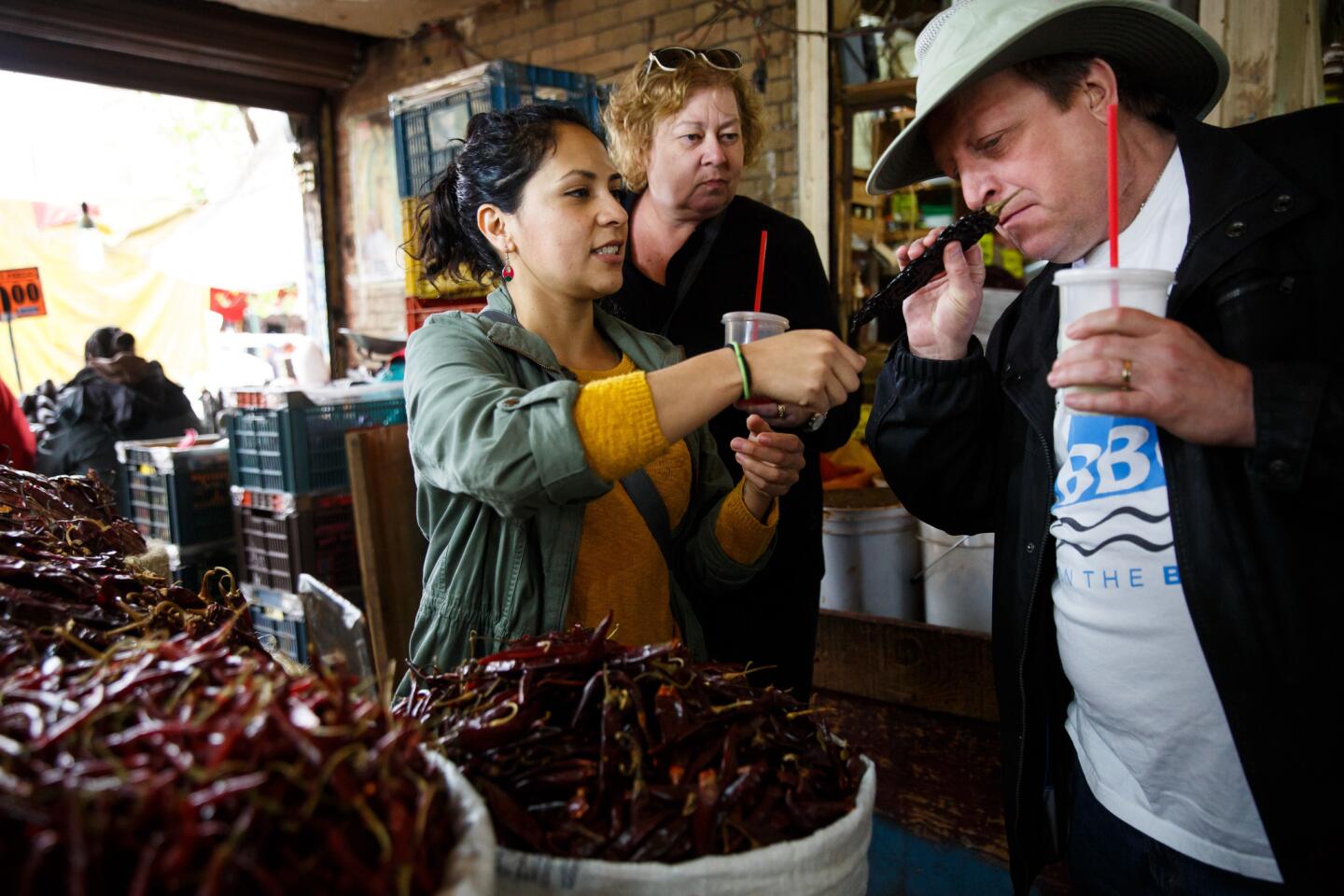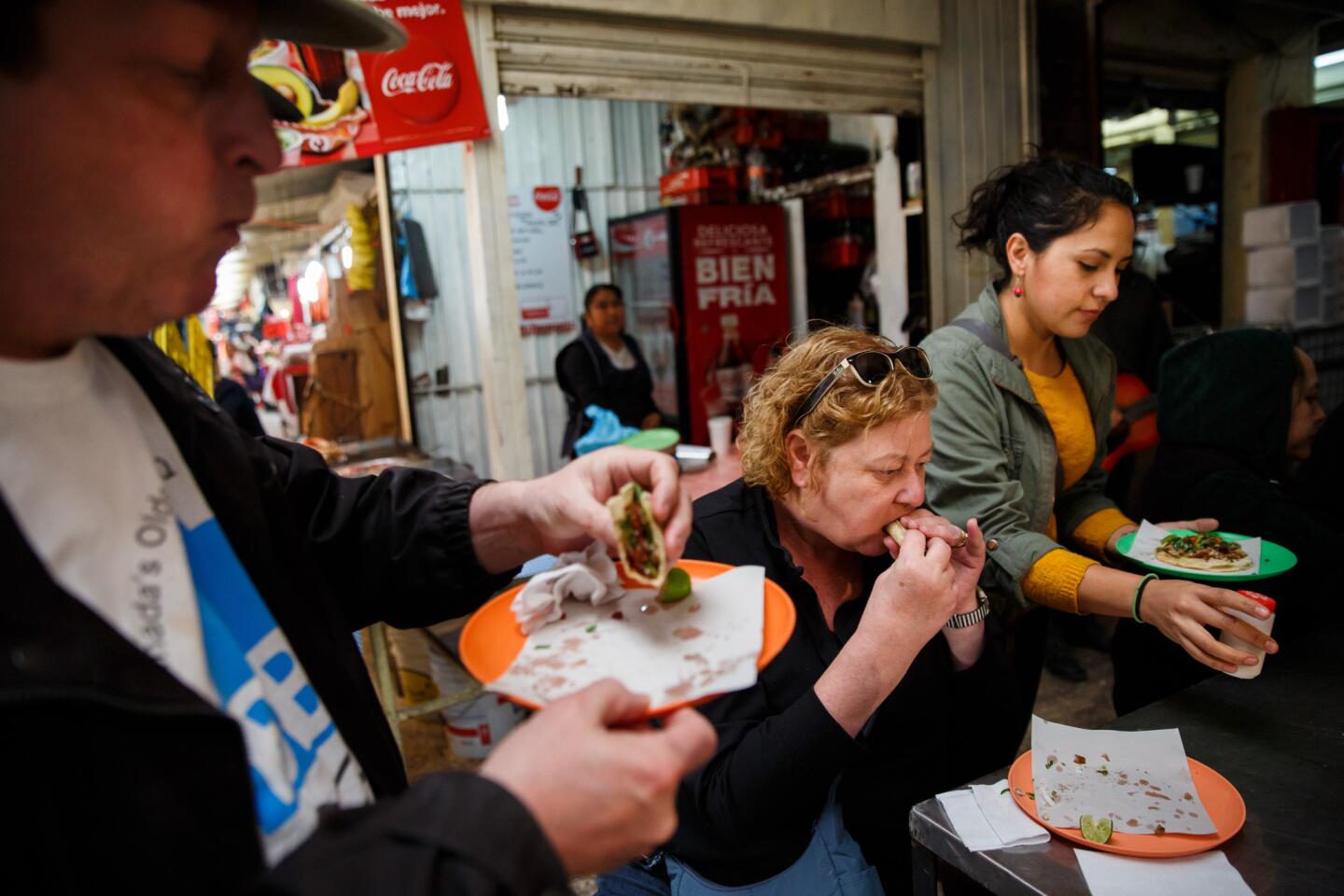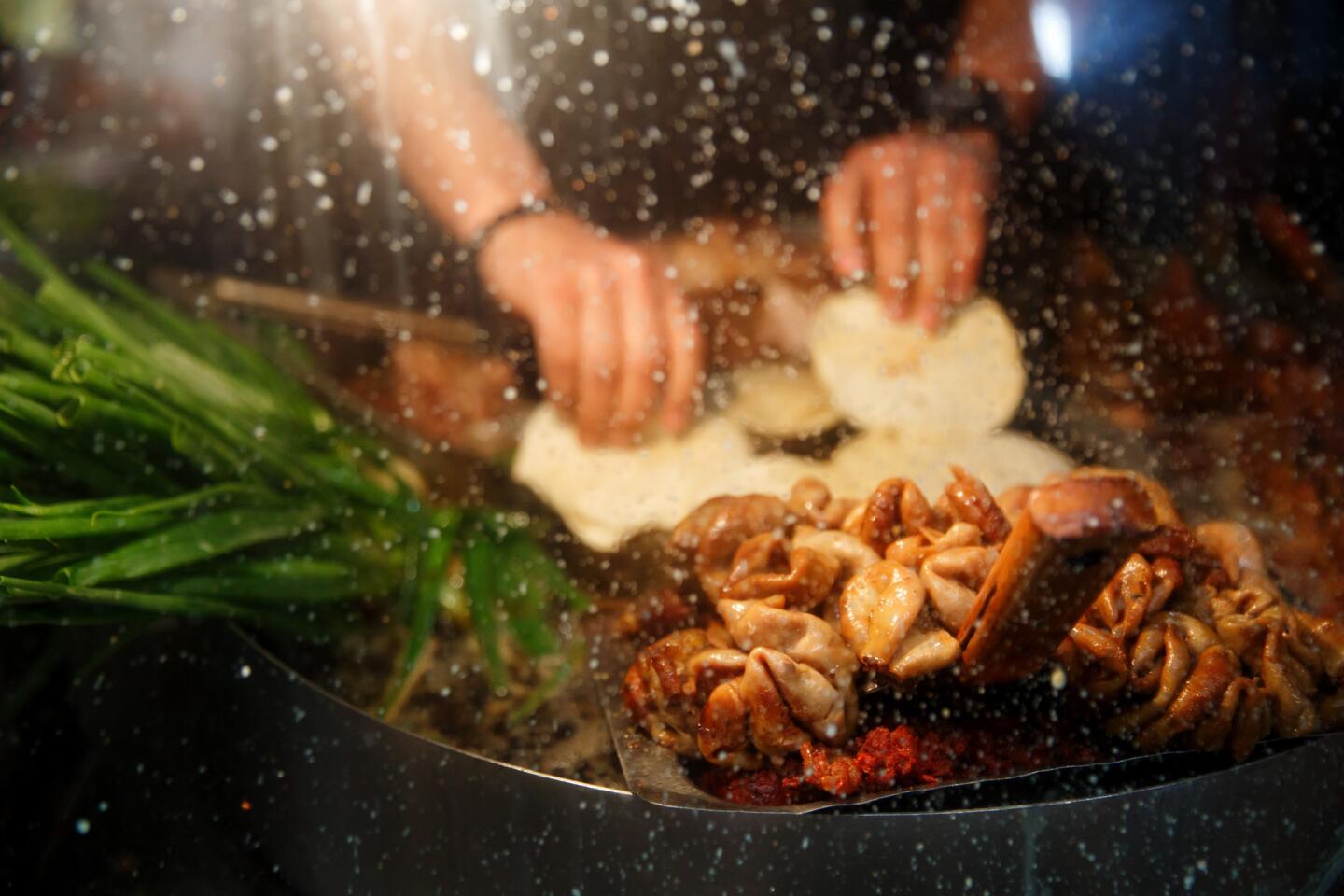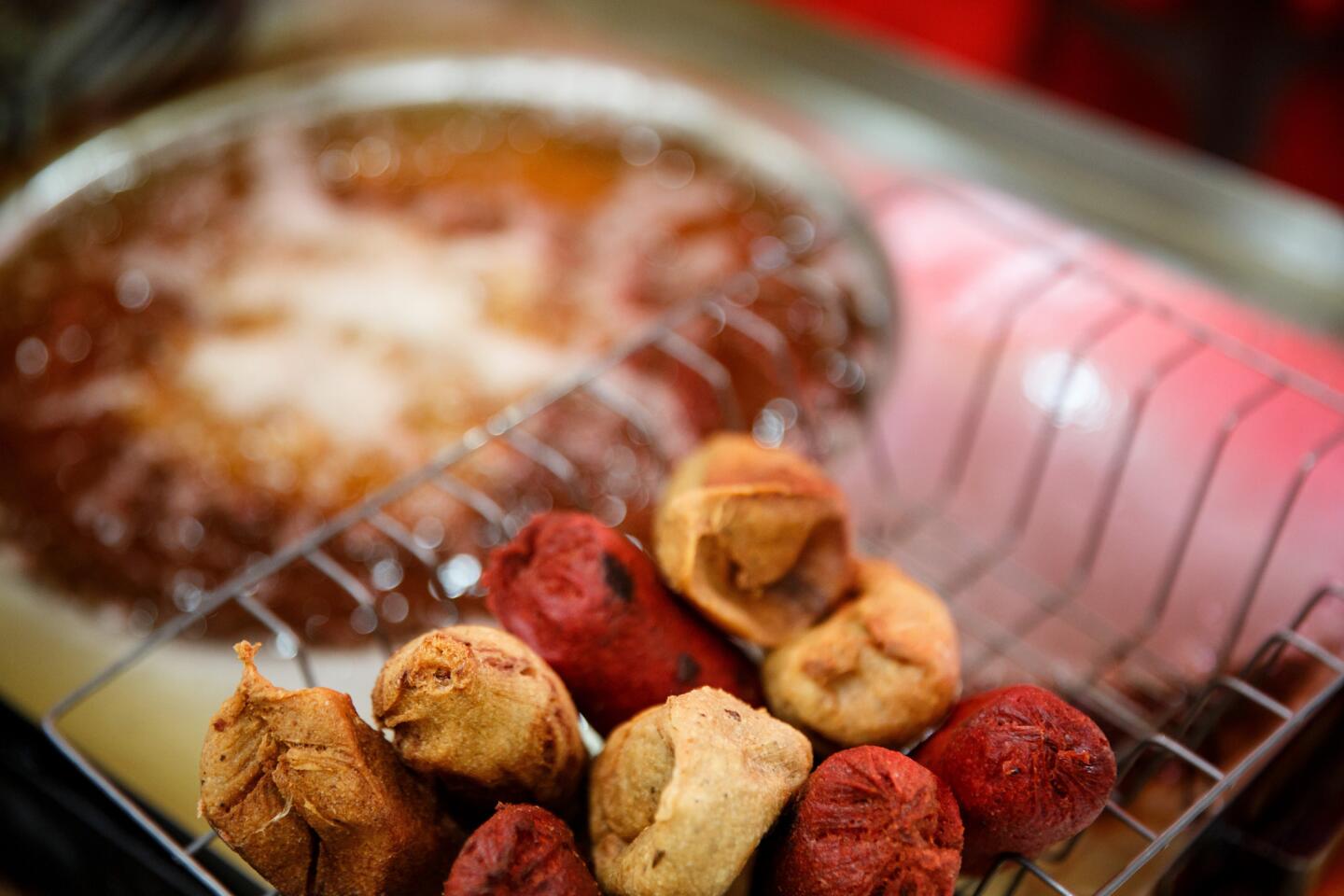Ox head tacos and cemita sandwiches are all part of the Mexico City street food tour
- Share via
MEXICO CITY — It’s difficult to find someone who doesn’t like at least some Mexican cuisine, with its influences culled from French, Lebanese and indigenous sources.
Luckily for visitors who want to explore Mexico City’s food in some place other than a fancy restaurant, there are several tours and cooking classes that provide a hands-on experience with Mexico’s culinary heritage and diversity.
I took two of them in November, one a tour of a decades-old open-air market where my guide and I bought the ingredients for that most Mexican of dishes, tacos al pastor.
On the second, I trod the tilted, broken sidewalks of the capital with a guide to seek the street food that makes the city’s denizens flock to the boulevards for savory meals. My goal? To find food as far as possible from Del Taco on the gastronomic spectrum.

Cemita sandwiches are made and served during the Eat Mexico street food tour in Mexico City.
The tour company, Eat Mexico, and our guide, Victor Gamboa, delivered. Lesley Téllez, author of the new “Eat Mexico” cookbook, co-founded the company in 2010 after moving to Mexico City from the United States.
Gamboa grew up in Puebla, southeast of Mexico’s capital, a culinary nexus where mole originated. As I suspected, leading this tour a hundred times didn’t dull his enthusiasm for teaching visitors about Mexico’s edibles.
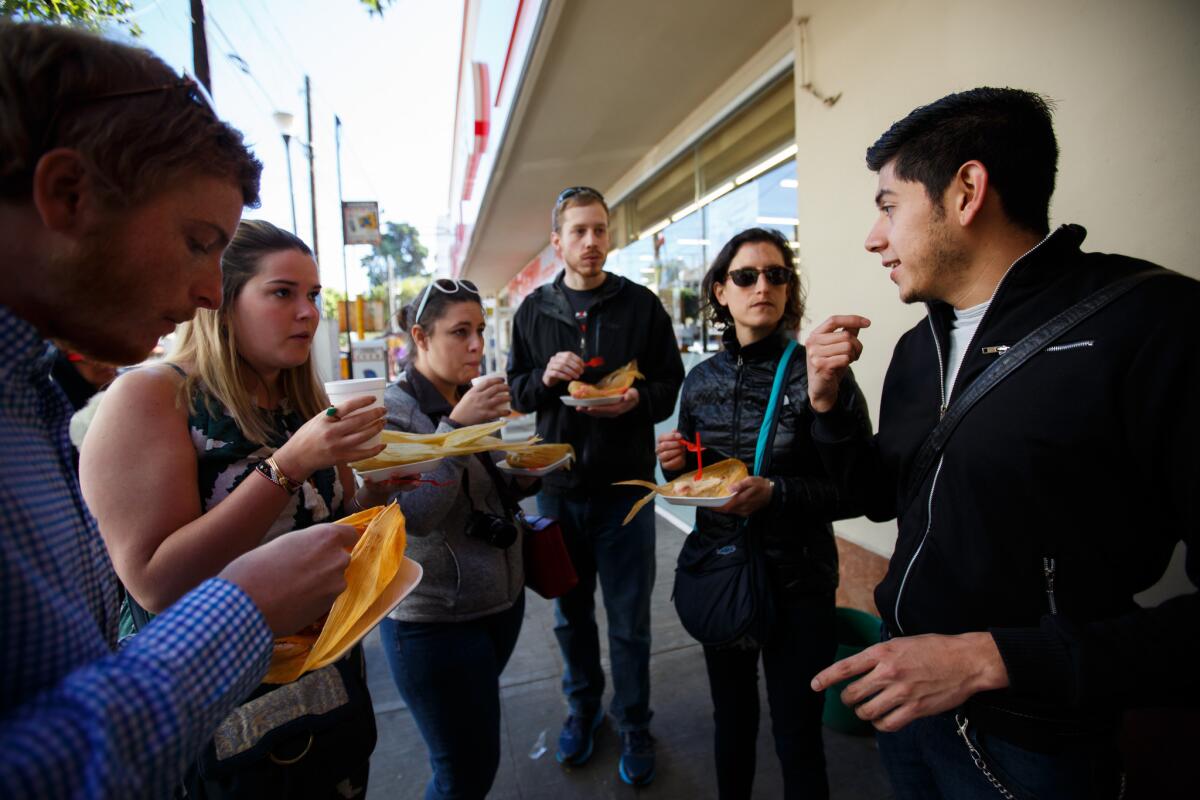
Ubish “Arturo” Yaren, far right, from Eat Mexico, leads a Mexico City street food tour group composed of Silas McRae, from left, Samantha Bellamy, Jess Fedderly, Matt Fedderly, and Sarah Rothstein.
We started in the shadows of the city’s financial district skyscrapers. Gamboa directed us to a humble cart where the steam from 40 fresh tamales lingered in the cool morning air.
For more than 18 years, Marisol has operated the cart, providing a traditional on-the-go Mexican breakfast for white- and blue-collar workers alike. Among the choices are tamales spiked with rajas — spicy strips of peppers — and a sweeter plain corn tamale traditionally colored pink for flair.
One interesting stop on the tour took us to a tortillería, one of dozens — if not hundreds — in greater Mexico City that produce the corn masa discs. Corn is native to Mexico and is its most important food staple — so important, Gamboa said, that the federal government caps the price of tortillas at about $1 U.S. for a 2-pound stack. He handed us each a hot tortilla and motioned for us to salt it lightly. It seemed too simple a treat for an American used to stuffing tortillas with meat, cheese and salsa, but in this case it left me well satisfied.
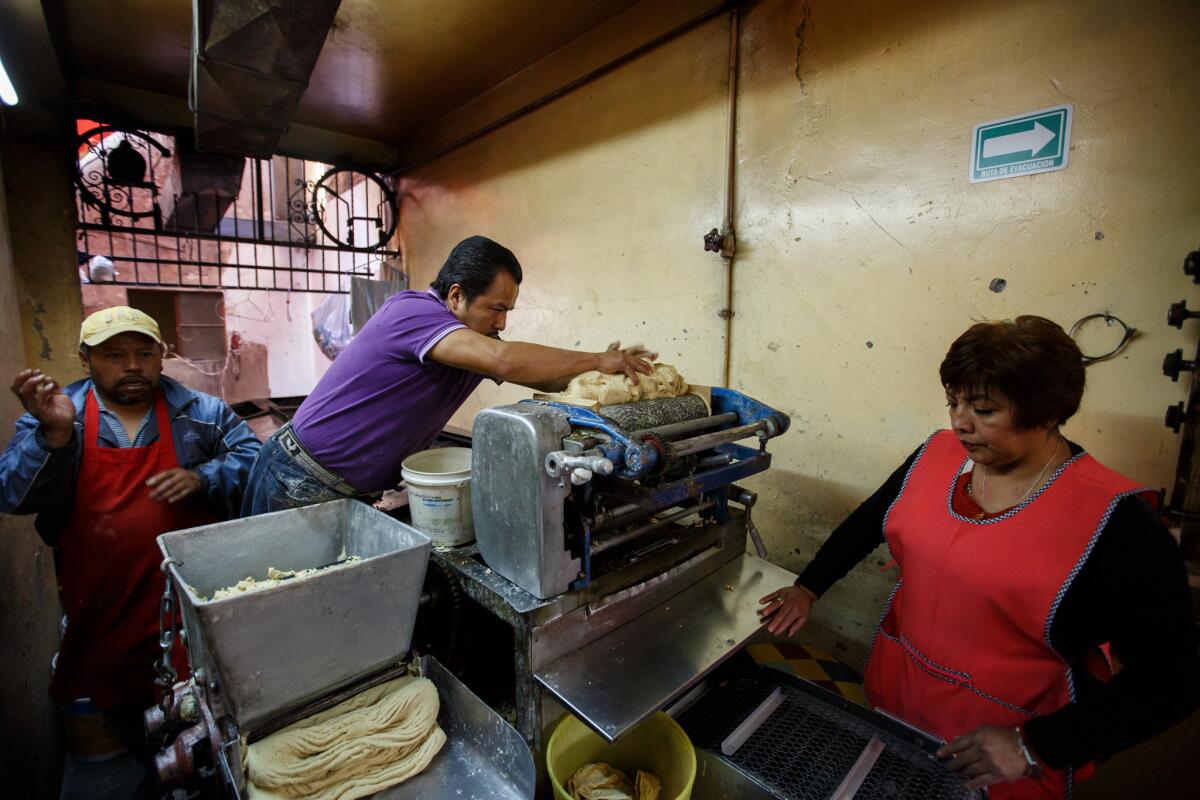
Visiting a tortilleria, where corn tortillas are made, during an Eat Mexico street food tour group.
I salivated when Gamboa announced carnitas awaited us at our next stop. It was an impressive sight, a small rickety cart somehow supporting an enormous steel bowl at a full boil, cooking a pig in its own grease.
“In Mexico, we don’t waste any part of the pig,” he said. Just then, one of the sow’s ears surfaced at the top of the caldron, only to be sucked under by the hot oil’s convection.
Gamboa grinned as he carried a pile of steaming pork on a tortilla — my first pig uterus taco. Just the sight of the spongy flesh told me this wasn’t something I would see at my local Southern California taquería, but that was the point of this tour, right?
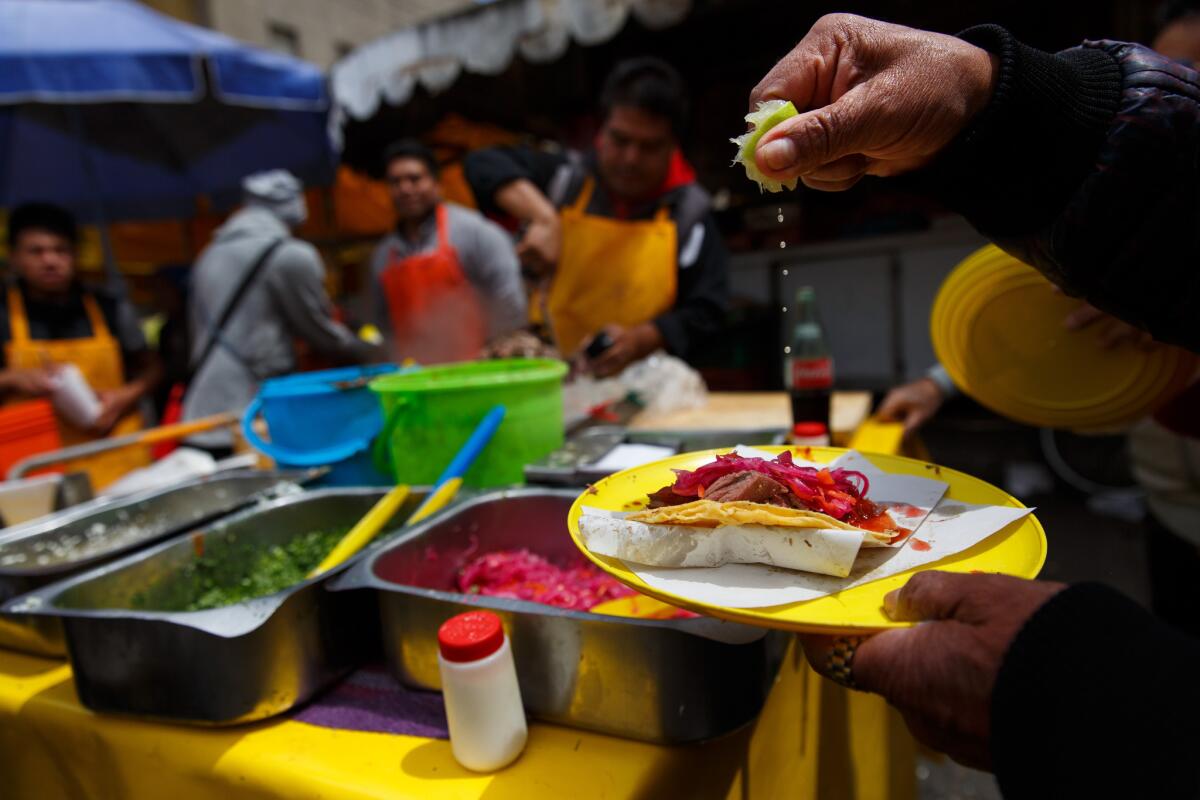
Lime is squeezed over tacos de cabeza at La Merced Market in Mexico City.
The savory, complex taste of the meat surprised me, and I managed three or four generous bites before revulsion at what I was eating halted my meal. Still, it was fun partaking of something so exotic.
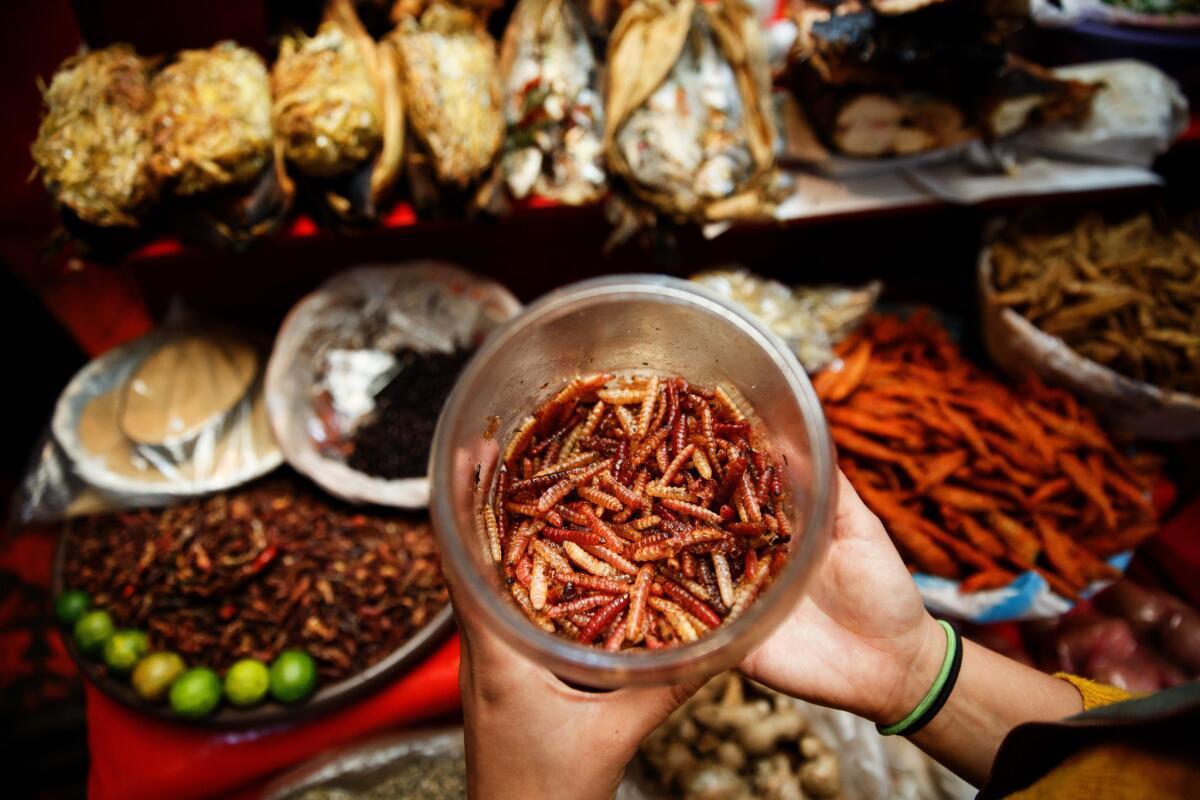
At the pre-Hispanic food section, Anais Martinez of Eat Mexico offers Brenda and Ken Black some maguey worms, a type of caterpillar that lives in maguey plants, during a food tour through La Merced Market in Mexico City.
The tour ended, appropriately enough, at a dulcería, or sweet shop. We found plenty of chocolate — another Mexican native — along with interesting curiosities such as snack wafers made from sesame seeds.
Gamboa presented us with an irregular chunk of vivid orange candied something and challenged us to guess what it was. As I did, the tempered sweetness reminded me of fall. Pumpkin! Another indigenous inhabitant of the Americas.
Our sweet teeth sated, we thanked him for an educational and happily hedonistic experience. The tour left me too stuffed to even think about dinner that night, but had I grown hungry, I knew where to find a few decent spots on the street.
Info: Eat Mexico Culinary Tours, www.eatmexico.com, 011-52-55-5952-4242. Tours begin at $85 per person. Discounts for larger groups.
MORE
Mexico City for vegans: Where to find a pozole sandwich and other specialties
Mexico City makes a fun playground for parents and children
Learn to make tacos the Mexico City way
Basic travel information for visiting Mexico City
Sign up for The Wild
We’ll help you find the best places to hike, bike and run, as well as the perfect silent spots for meditation and yoga.
You may occasionally receive promotional content from the Los Angeles Times.
